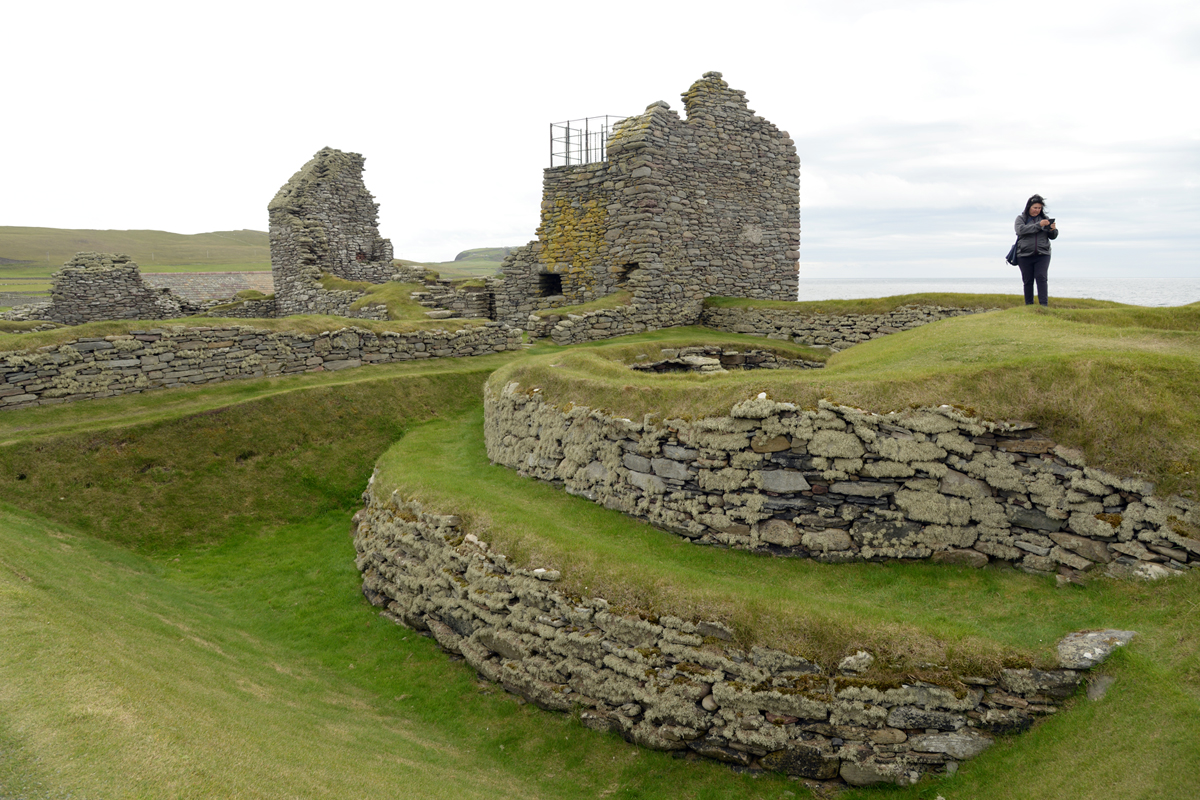
A couple of years ago I was visiting the cold, windswept islands of Orkney and Shetland in the Atlantic Ocean. Both places have close ties to Scandinavia, because of Viking settlements during several hundred of years. The islands are also unique because of the many archeological sites to testify that there has been settlements dating back to the Stone Age. I only had a three day visit on the Shetland, so my travel companion and I had to make choices when it came to which sites we should visit. On Shetland, our choice was Jarlshof. The history of Jarlshof is the history of habitation that almost uninterupted dates back more than 4000 years. The site shows the remains of the different settlements from around 2500 B.C to 1600 AD. This fact makes Jarlshof one of the most important prehistoric sites in Shetland. Jarlshof is located by the sea, which means wind and erosion has destroyed parts of the site, but there are enough remains left to give you an idea of how people lived during these centuries.
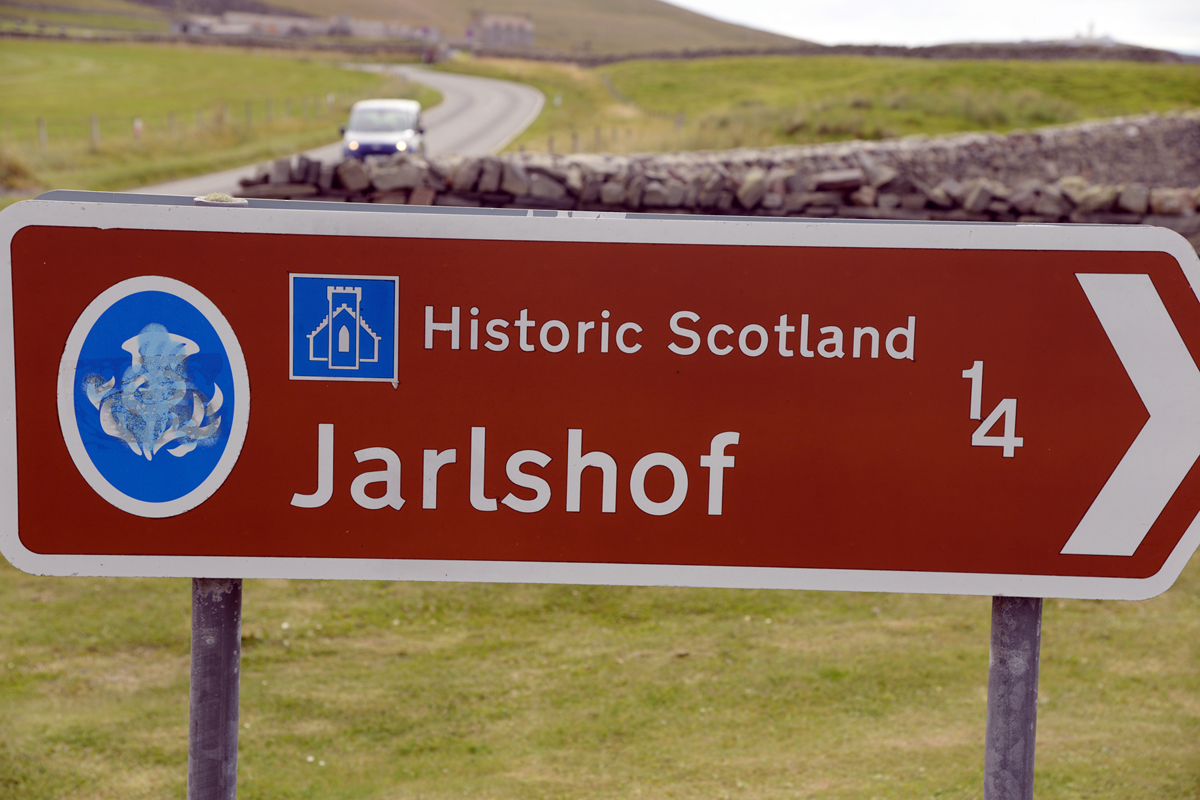
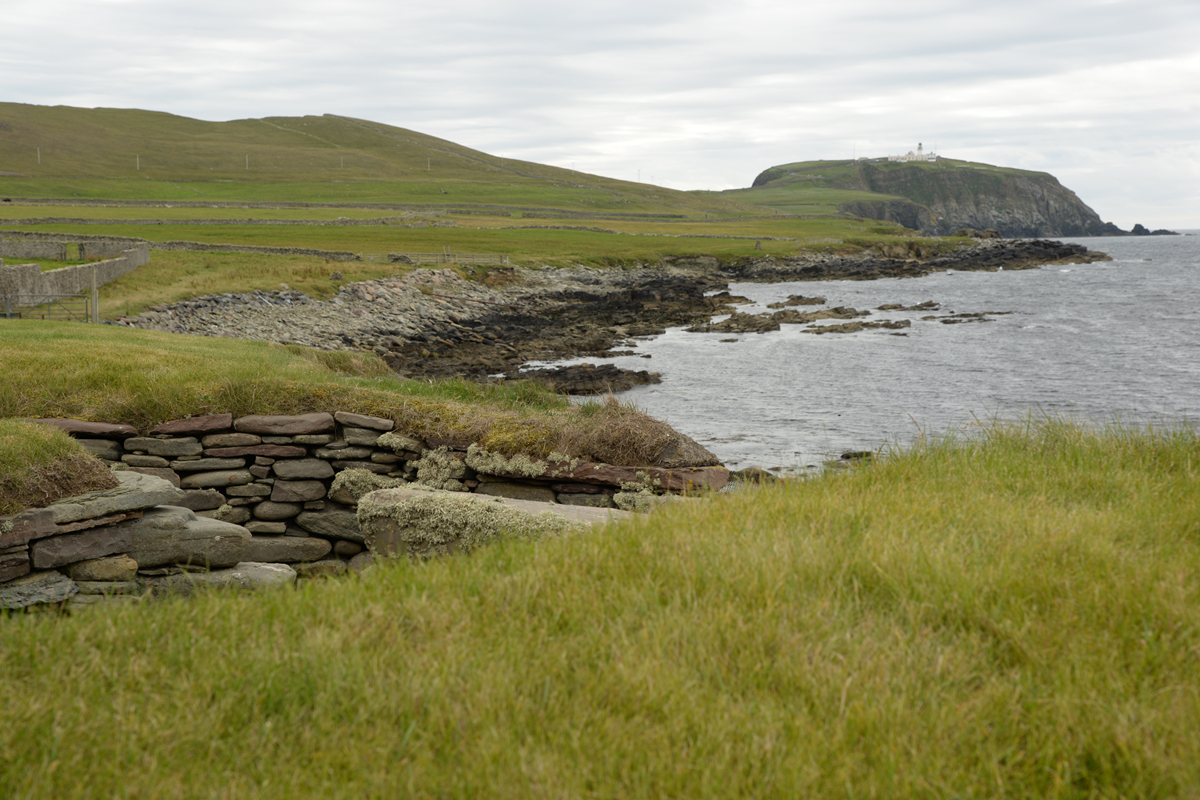
For years this place was covered in sand, blown in from the sea. When the buildings were rediscovered in the 1890s it was a storm that revealed some structures and excavations began. These revealed layers of settlements proving the place has had habitation that goes back to Neolitic times. But also habitations from the Bronze Age, Iron Age, Norse settlements and a medieval farm. The notorious, tyrannical Lord of Shetland – «Black Patie» has also been associated with Jarlshof. The habitation at Jarlshof has been going on all this time since the Stone Age. New settlements replaced the previous one and were constructed on top of the previous. This lasted almost without interruption until the 1600s. When the last settlement was abandoned, the wind blew sand over the site, covering the remains of the houses. When I was walking around the site, I could easily to imagine how fast it was covered in sand. The wind is strong.
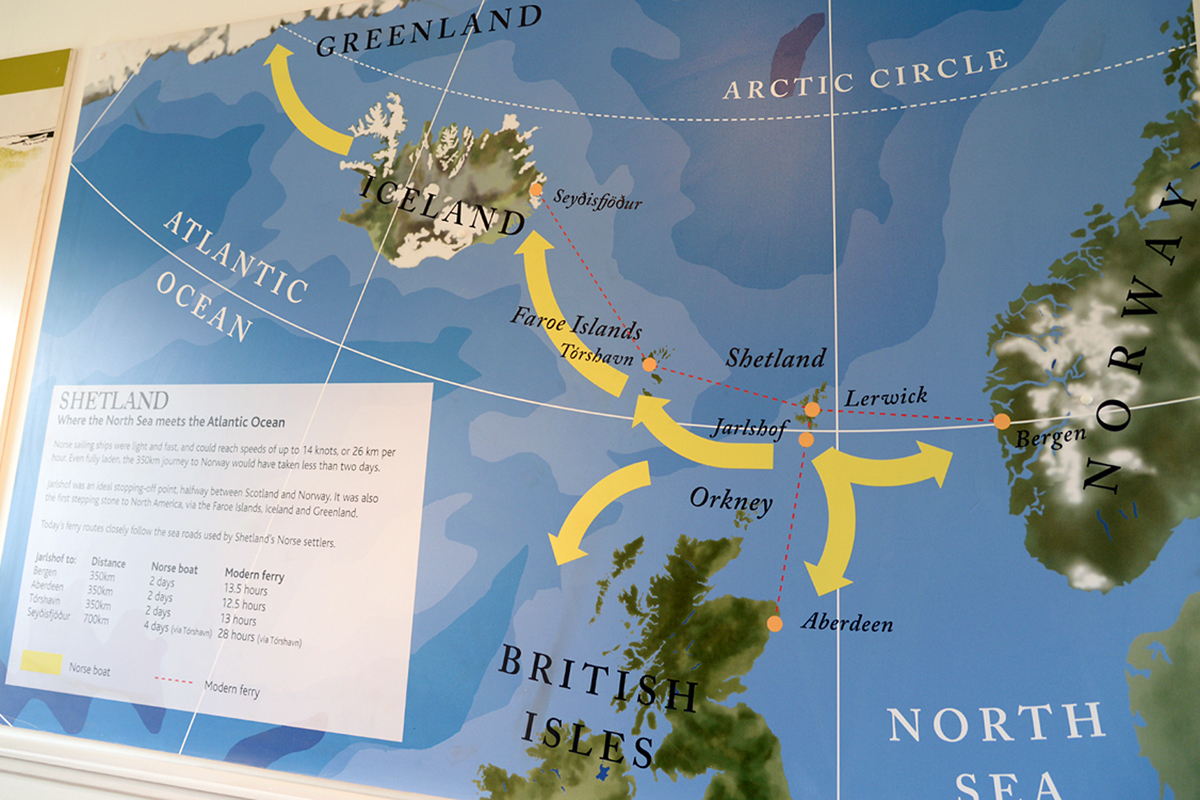
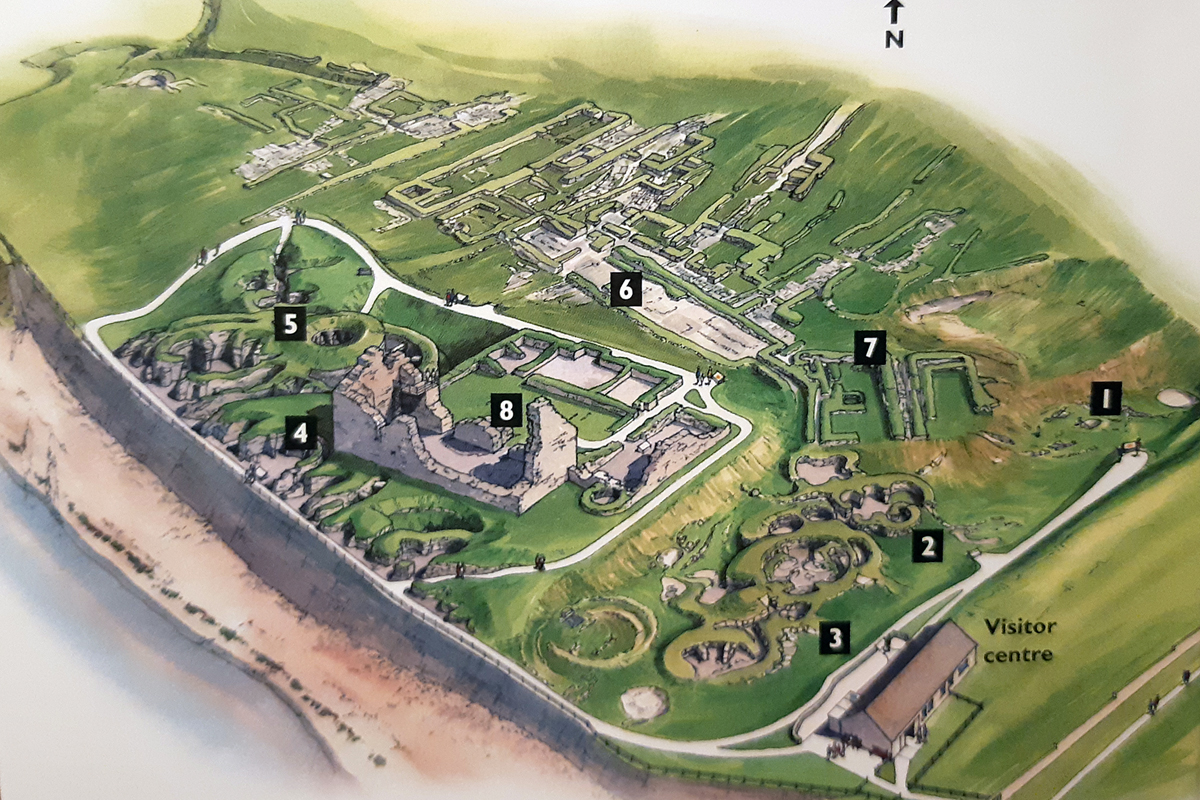
To get to Jarlshof, we took the local bus from the capital Lerwik. It took an hour to get here. There is a hotel right by the car park. In addition a small visitor center. That's where we bought tickets and received a headset and tape player that became our guide on the tour around te site. Before we started the tour, we took the time to study maps and information signs both inside the visitor center and the map outside. The nice thing is that the signs are numbered. That's where we should stop and start the tape. The drawings on the boards show what the houses may have looked like. That helped a lot to understand what they might have looked like. So let the tour begin. We started in chronological order by starting at the oldest part which on the map has no.1
1: Stone Age dwellings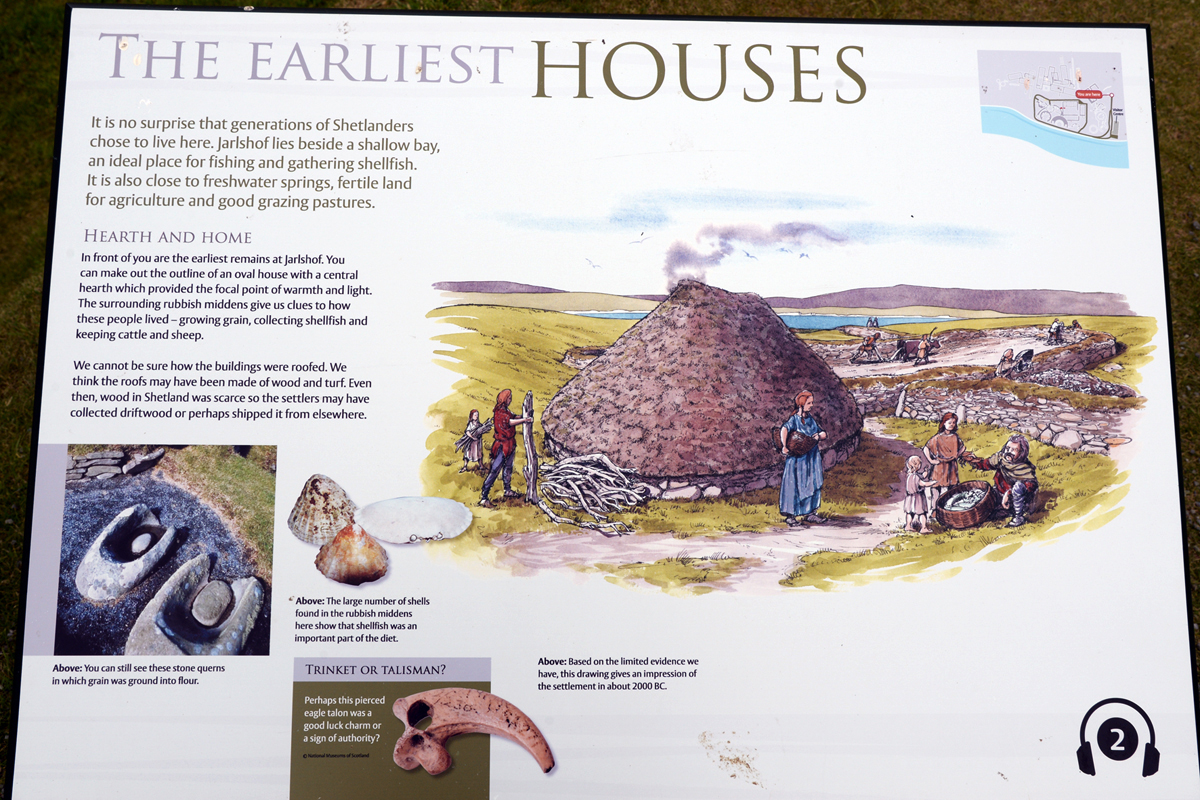
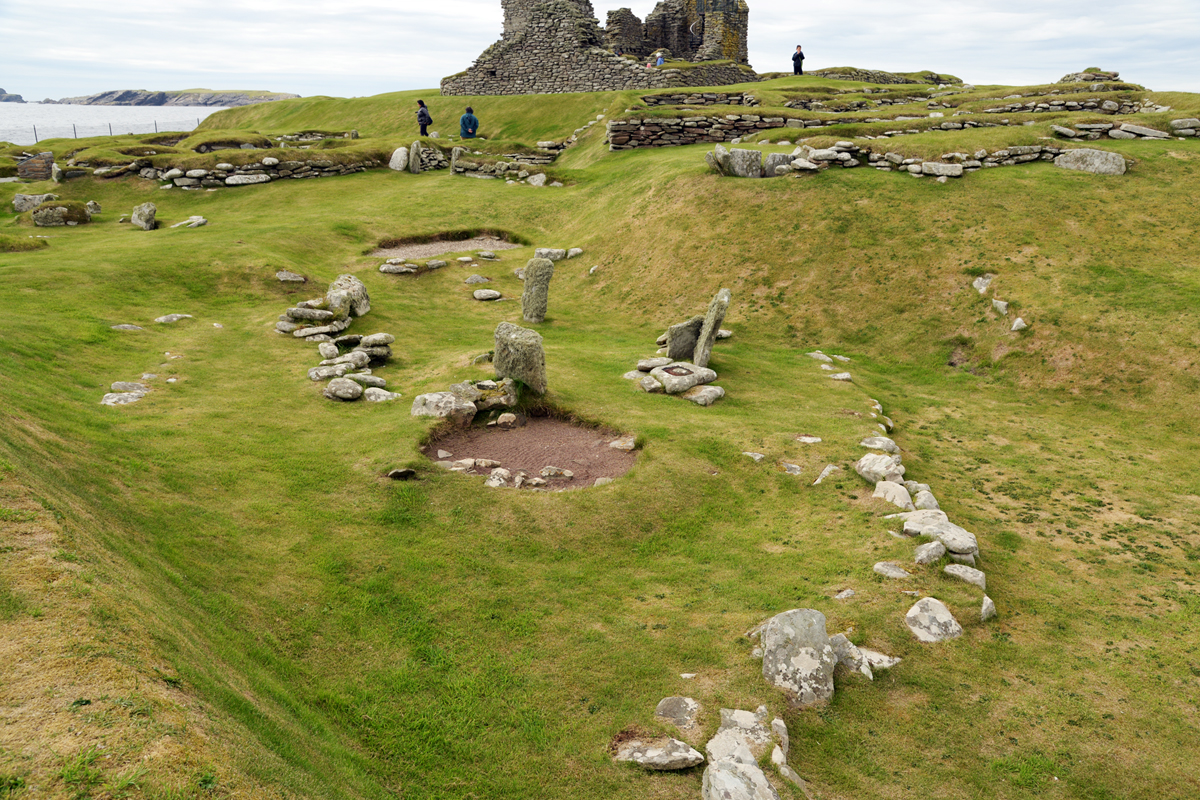
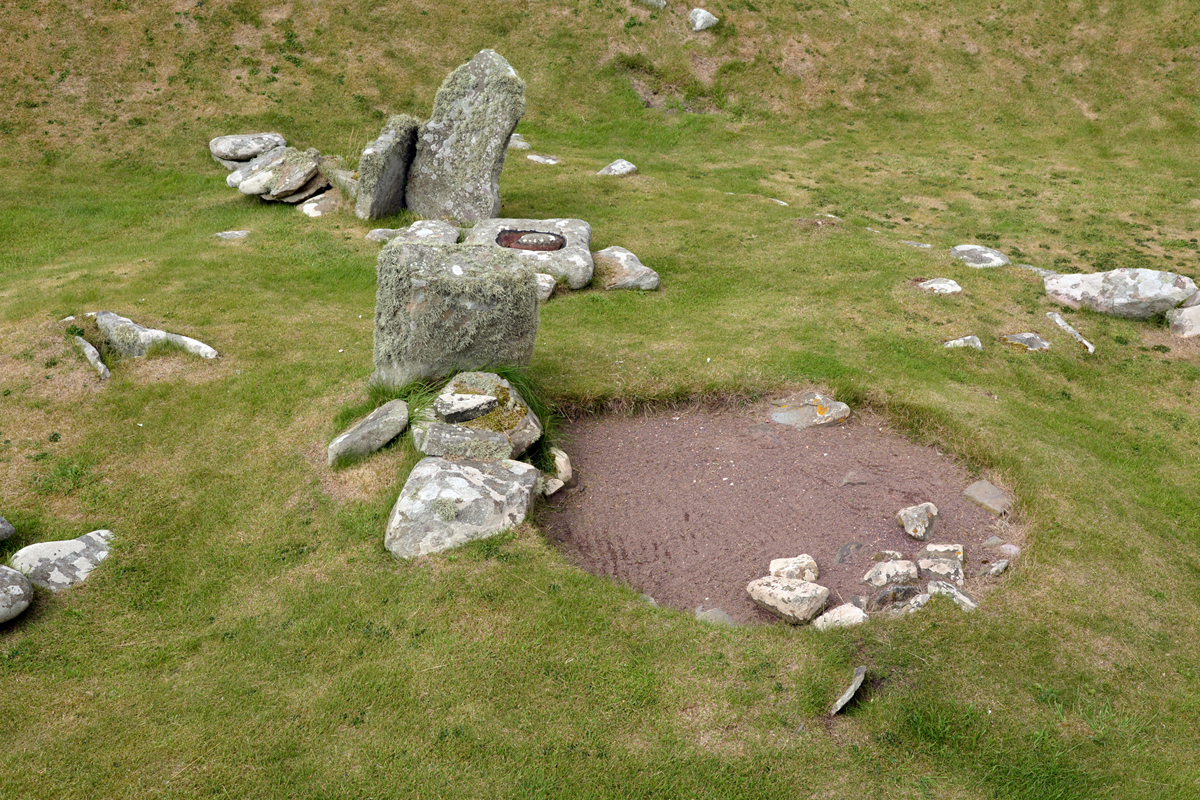
The earliest evidence of settlements are these remains of Neolitic dwellings that dates back to around 2500 B.C. ( for comparising, the Great pyramid in Egypt was built in 2600 B.C.). There is’nt too much left, but the drawing gives an idea of what the oval house might have looked like. It's possible to actually see the outline of the house with the central hearth.
2: The Bronze age settlement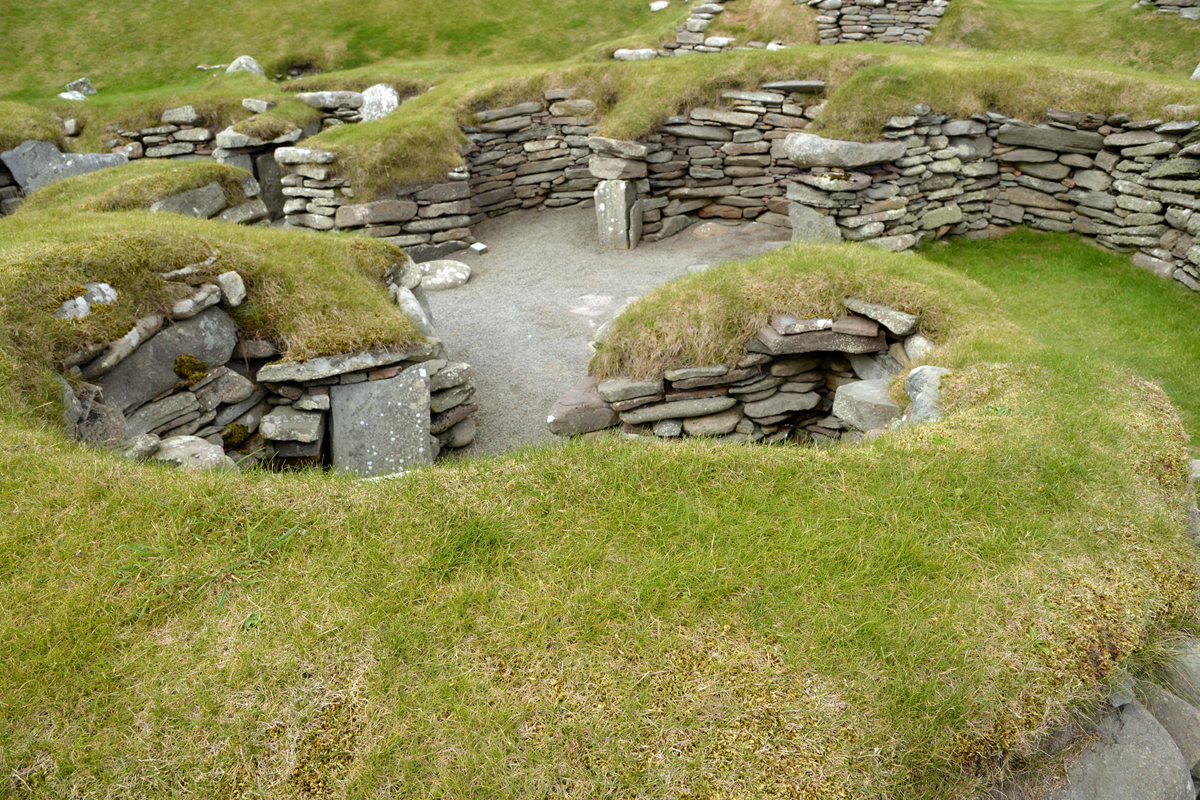
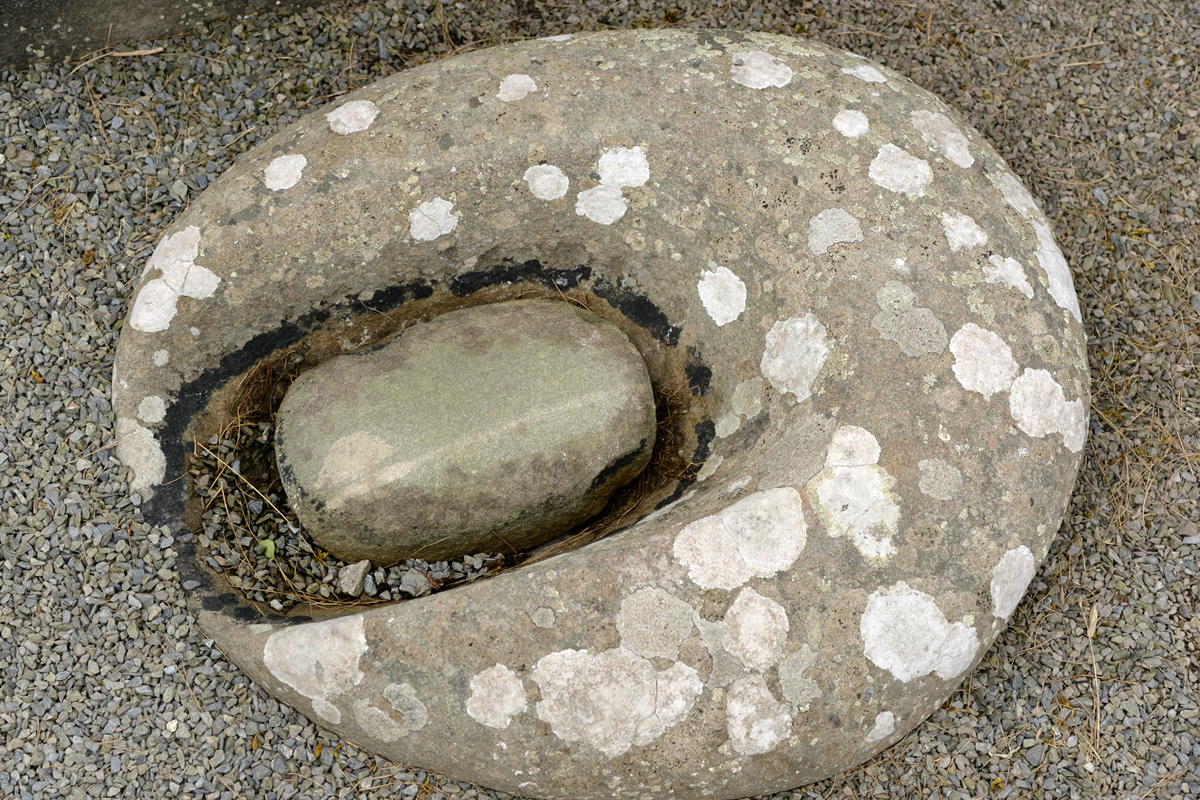
This house has also had a smithy, where the bronze – smith, would have produced his tools. Many of the items found here, are similar to what has been found in Ireland. That's why it's believed that the inhabitants of Jarlshof might have had contact with settlements in Ireland. It is believed that the smithy dates back to around 800 B.C. It's the smithy that's in the foreground of the photo
3: The Iron age settlement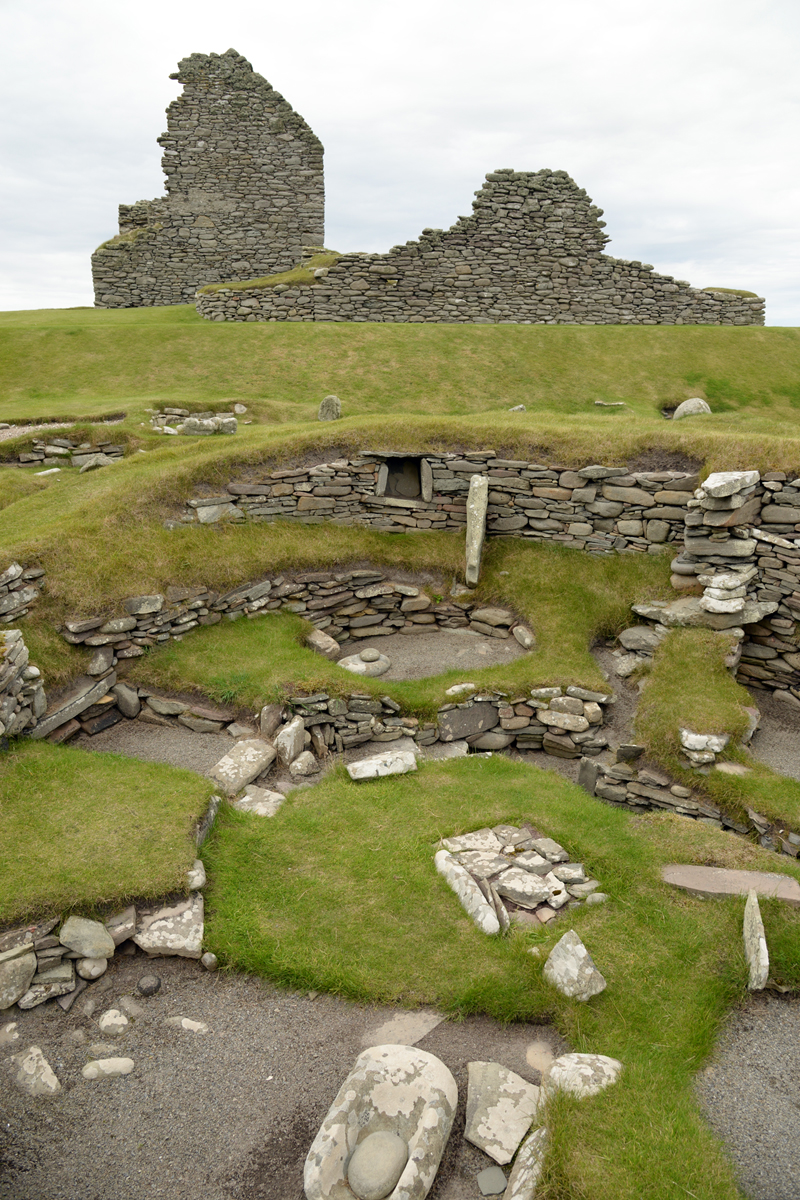
Part of this settlement overlies the Bronze Age settlement, so the people who used to live here, must have left. With the Iron Age new technologies were introduced. Iron was a stronger metal, so tools and weapons were much stronger. These people also introduced weaving. Maybe that was the start of the textile industry?
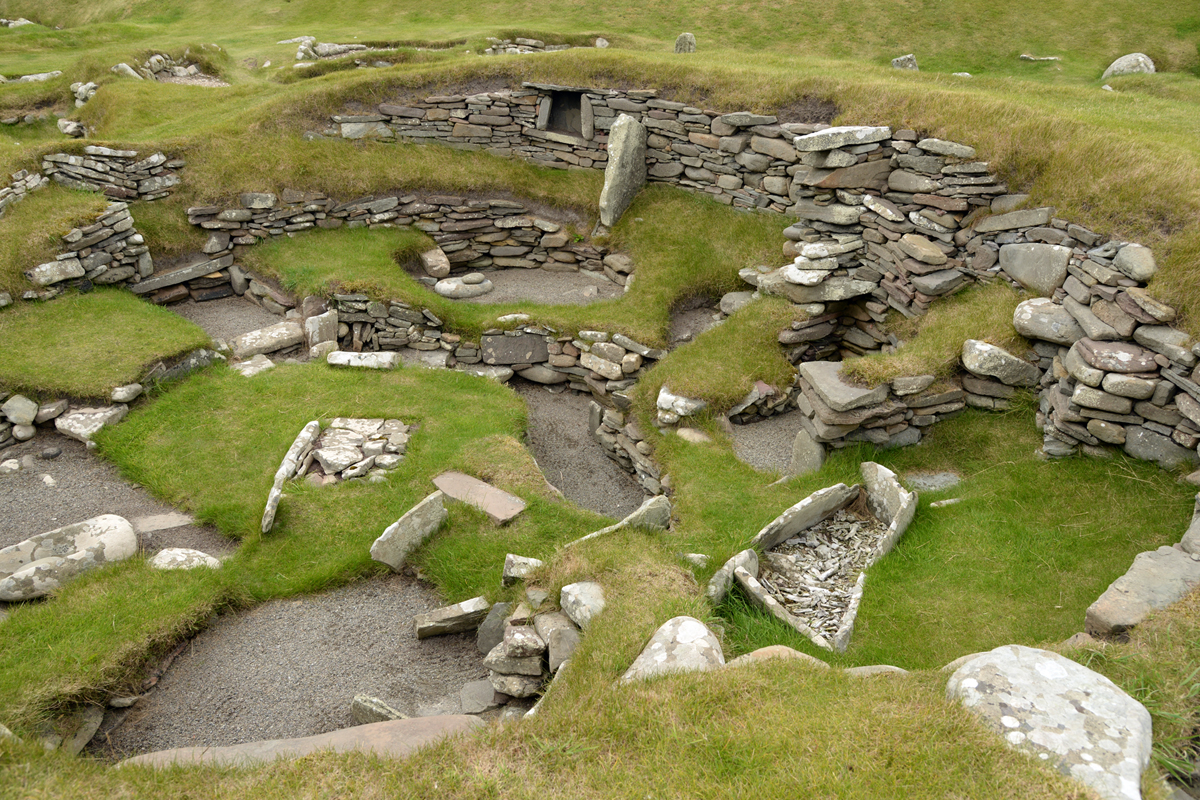
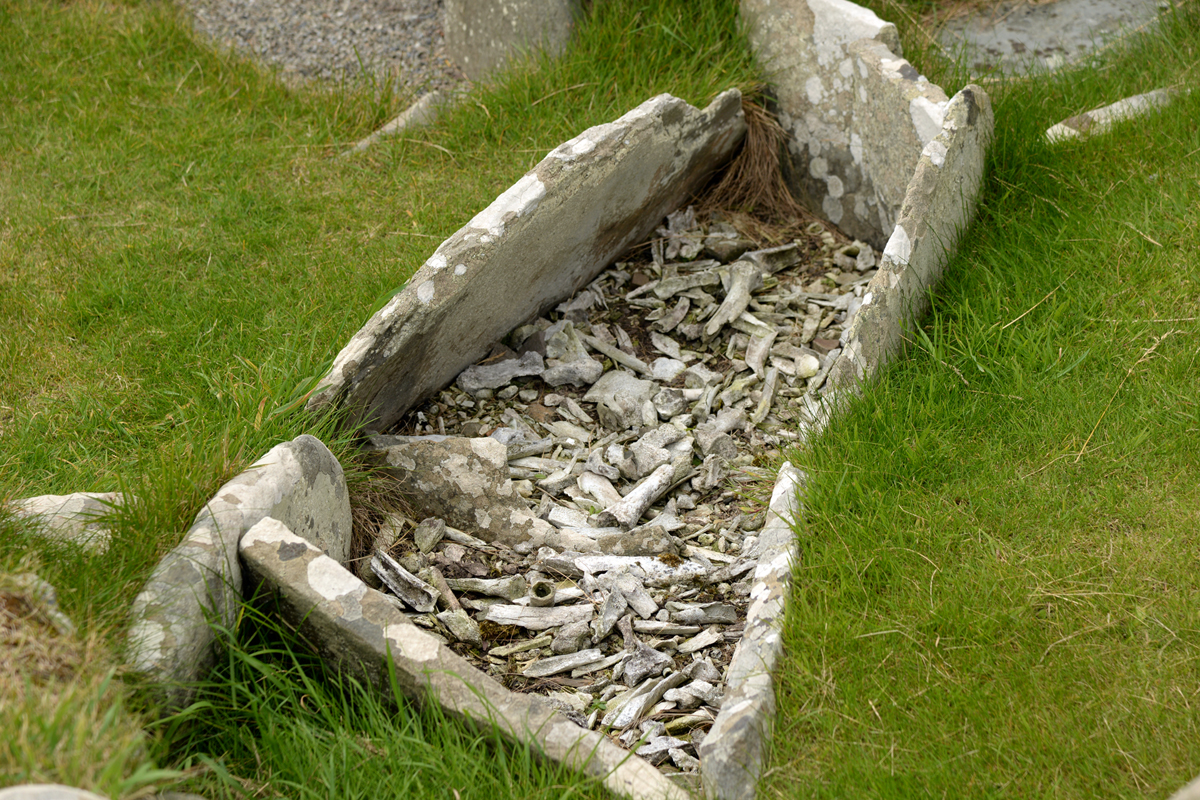
The building style of the houses during the Iron Age, changes in a way that gives more space inside. The photo above shows the largest of these dwellings with cells radiating away from the central hearth. There is also a kind of quite large box containing animal bones and stuff I can't see what is...
4: The Broch and it’s courtyard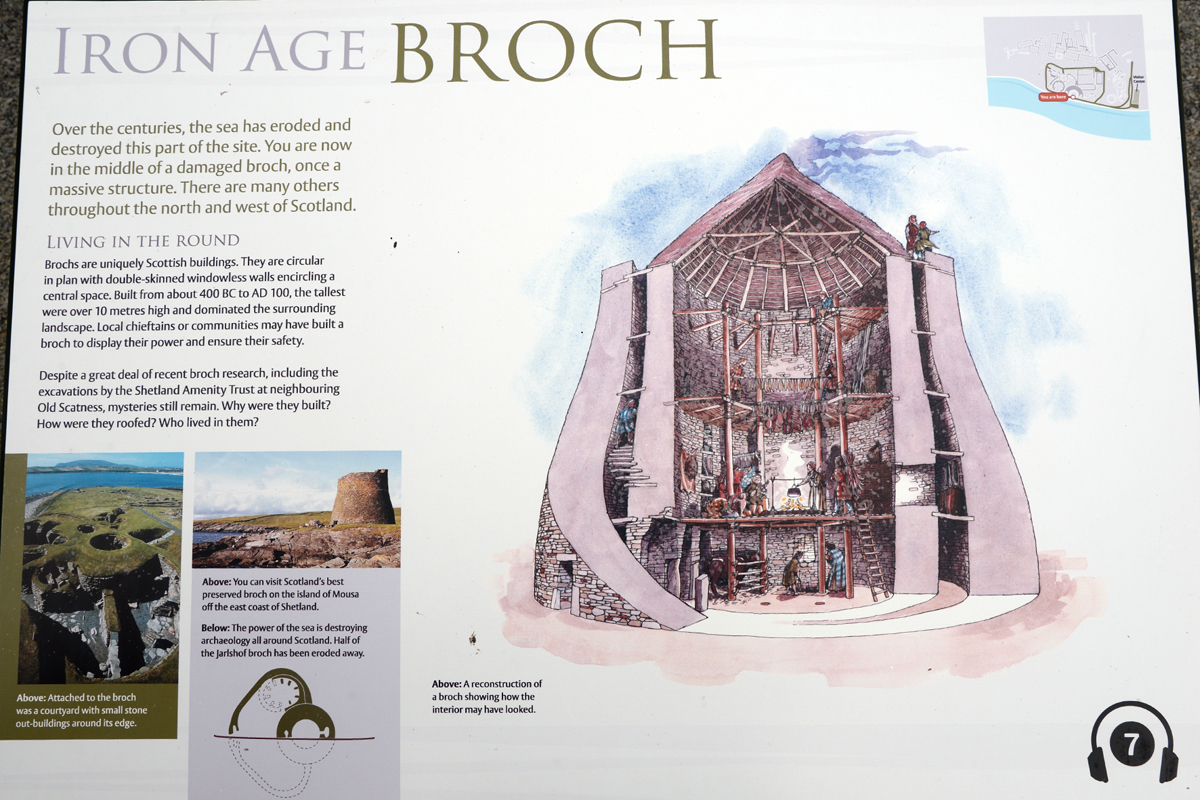
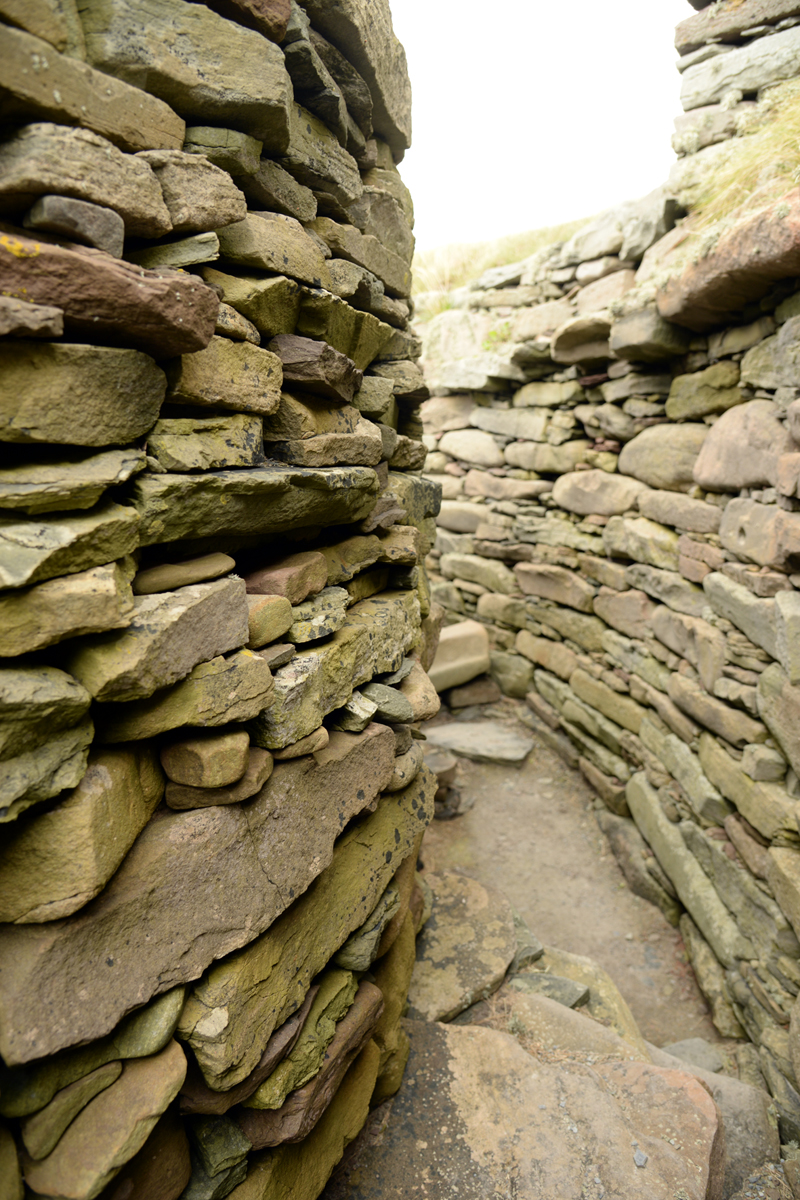
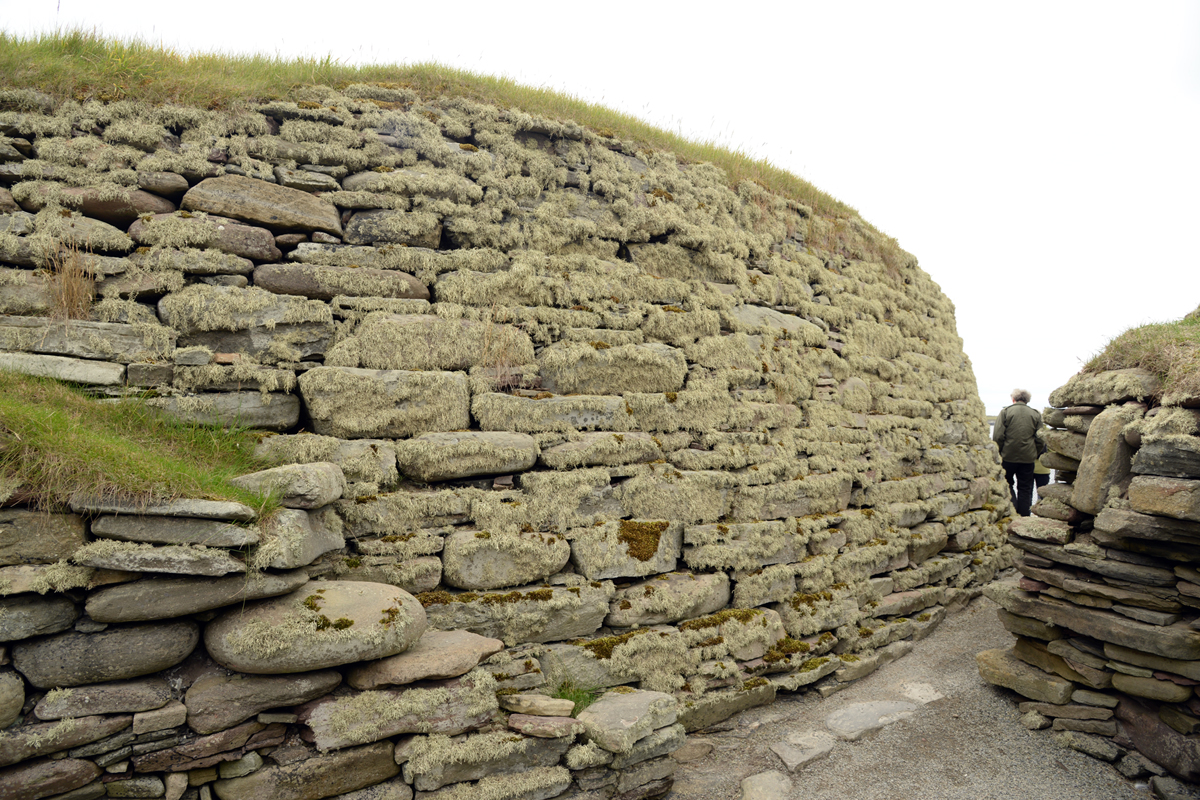
Half of the Broch (a tower like building) is missing. It has probably been taken by the sea, leaving a cross section of the Broch tower that must have been at least three storys high. When looking at the drawing of what it looked like, we did actually did manage to see what was remains of the outer and the inner walls.
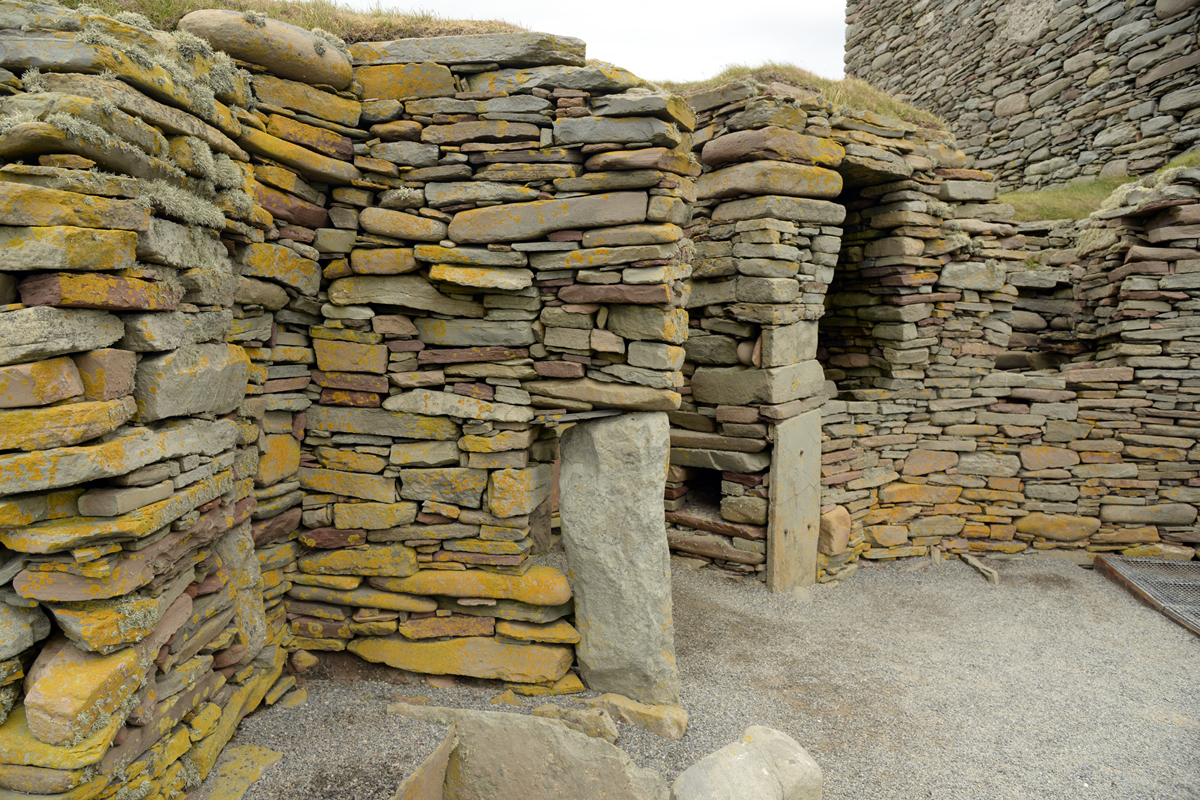
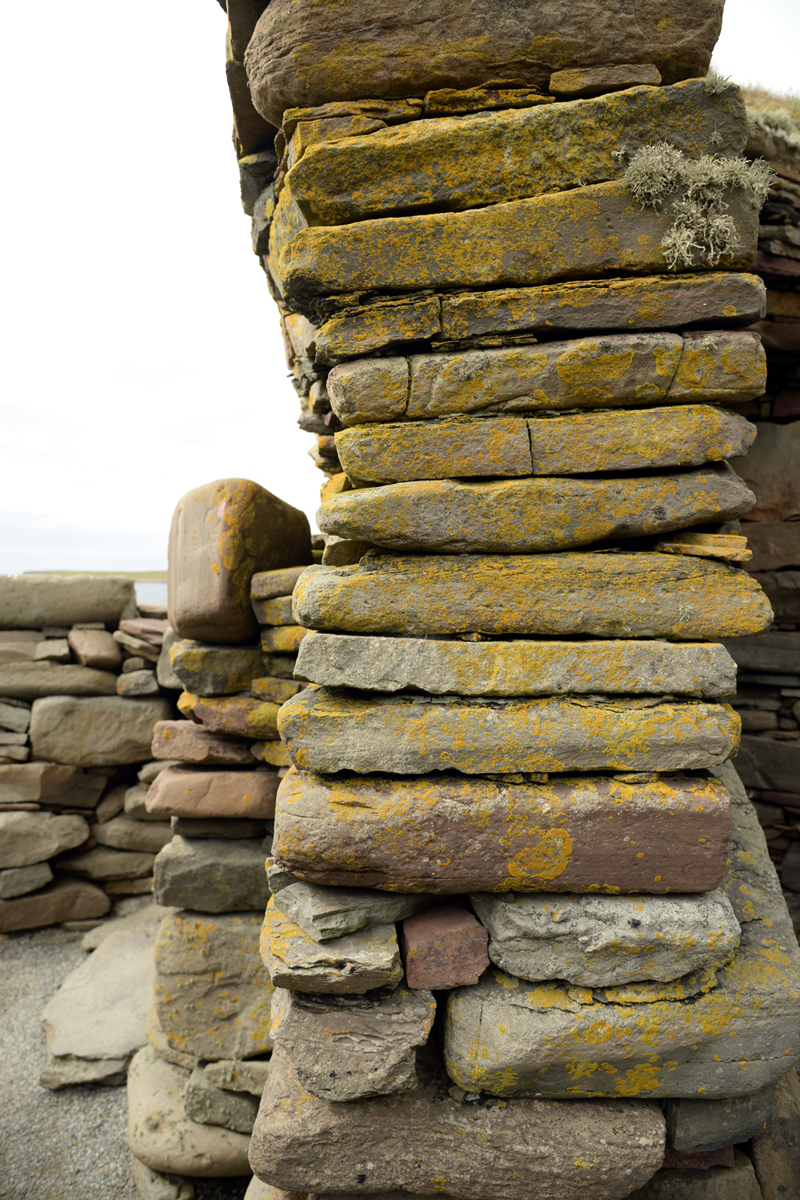
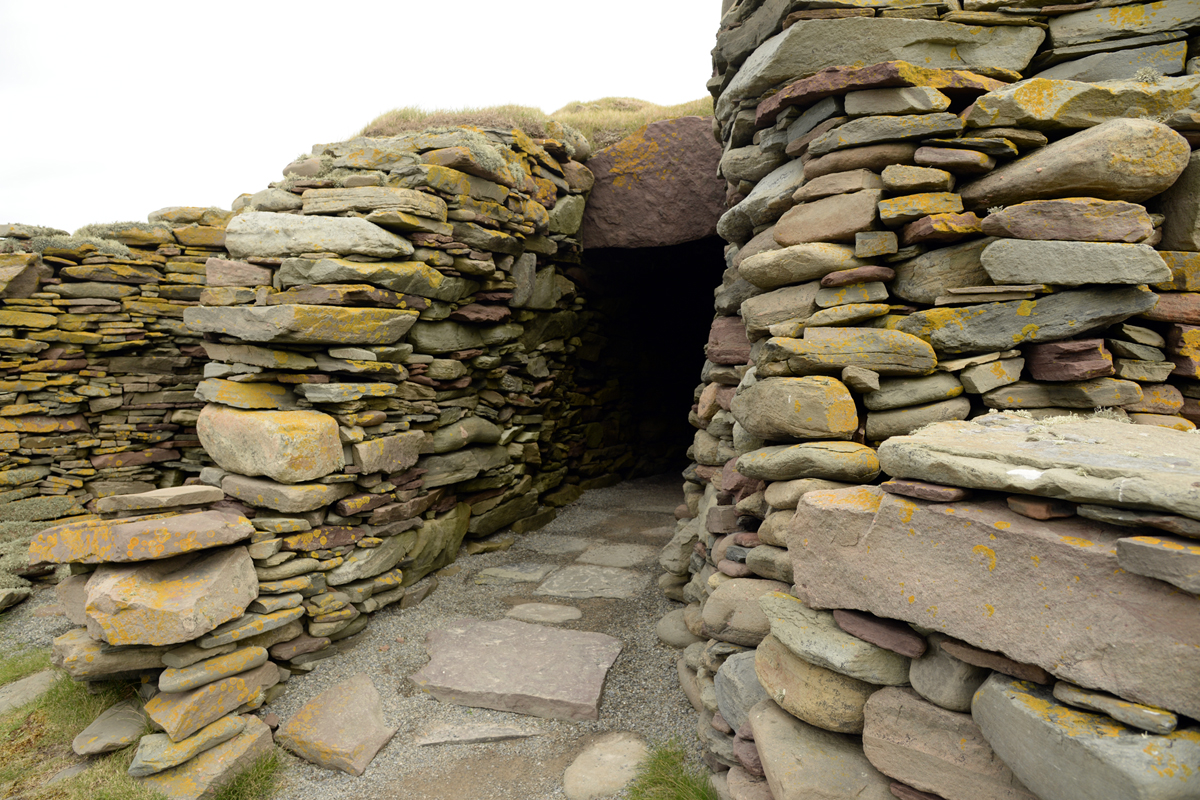
The new settlers who built the Broch arrived between 100 B.C and 100 A.D. They created this massive tower of stone. At the end of the Iron Age, there was a change in climate. Control of goods became more important and the result was enclosed settlements that could have been built as defence as well. What we can see today has a hight of 2,5 meters, but it might have been as tall as 13 meter. The Broch has a courtyard with a stone wall around. But some of it is beneath part of the Laird's house.
5: The wheelhouses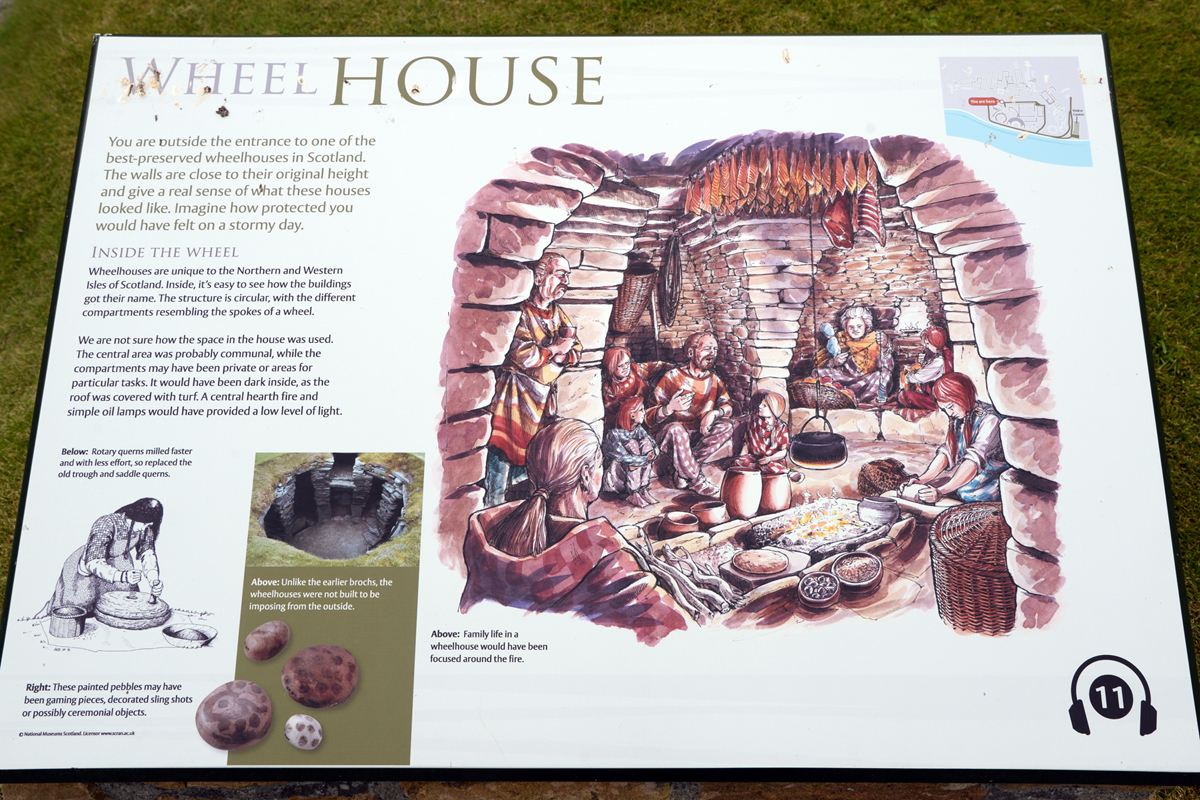
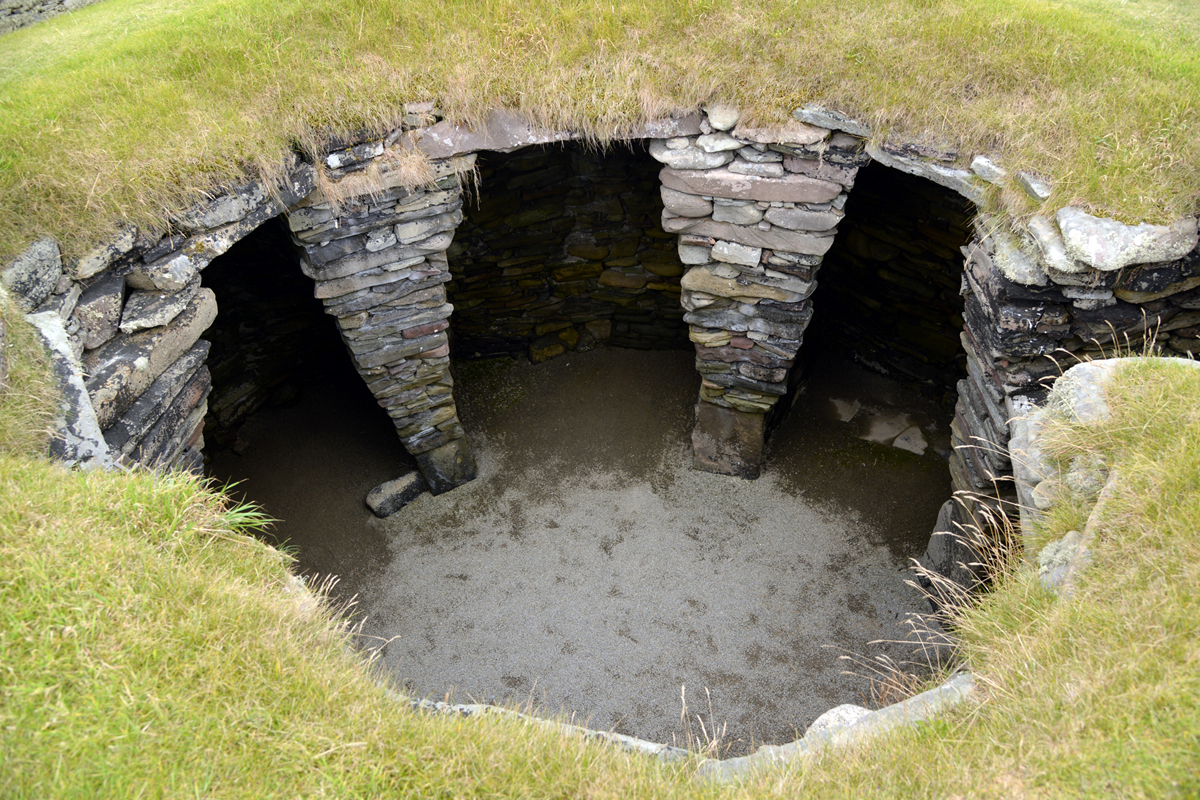
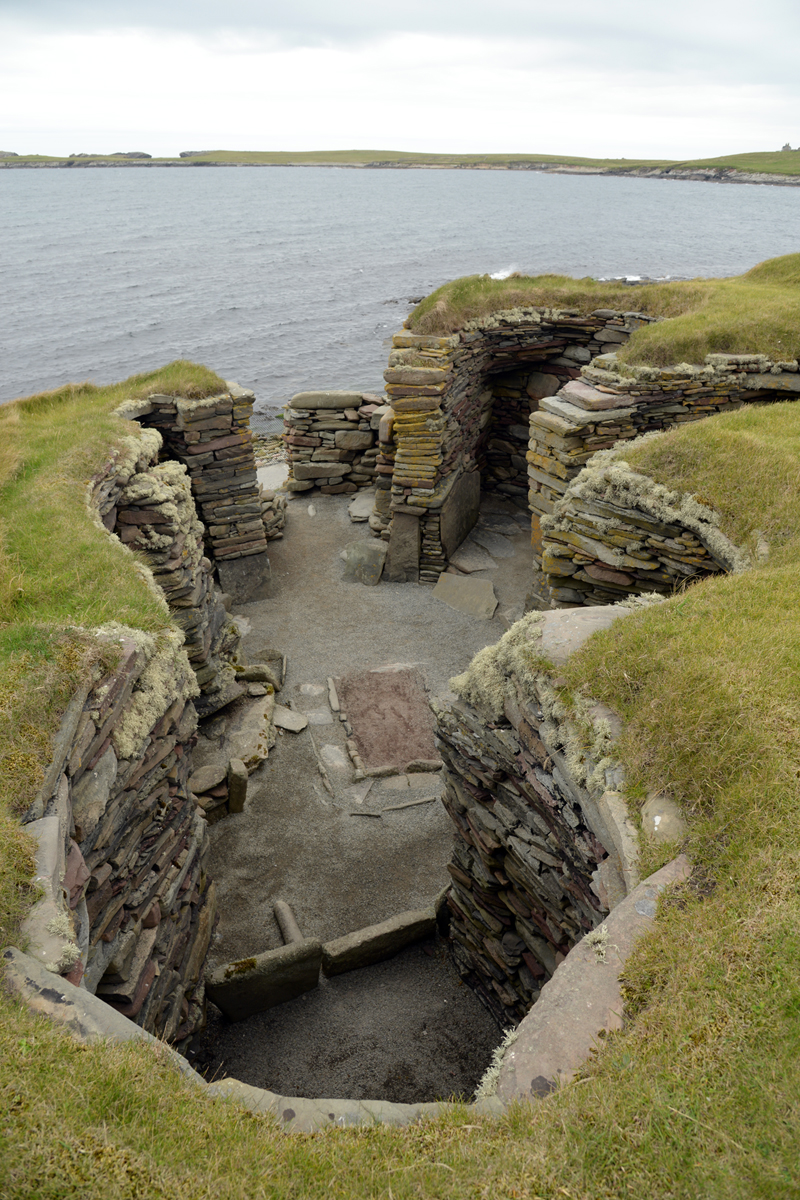
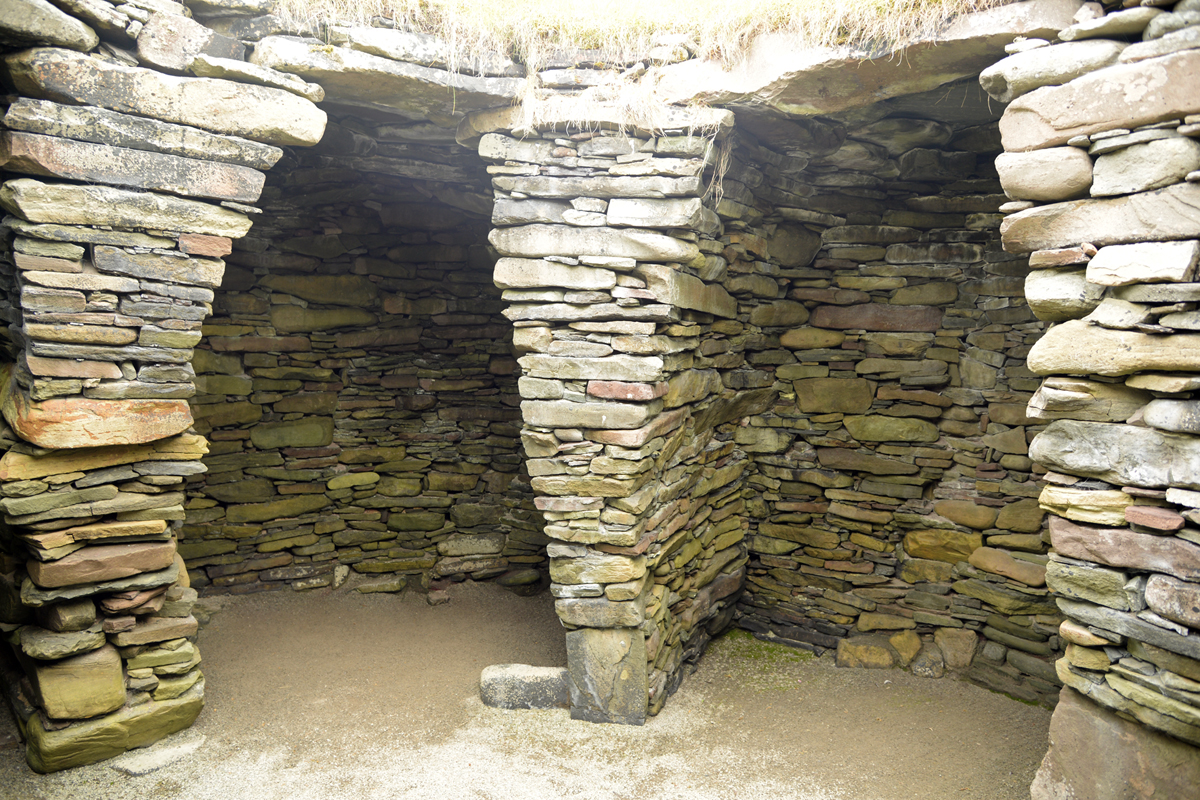
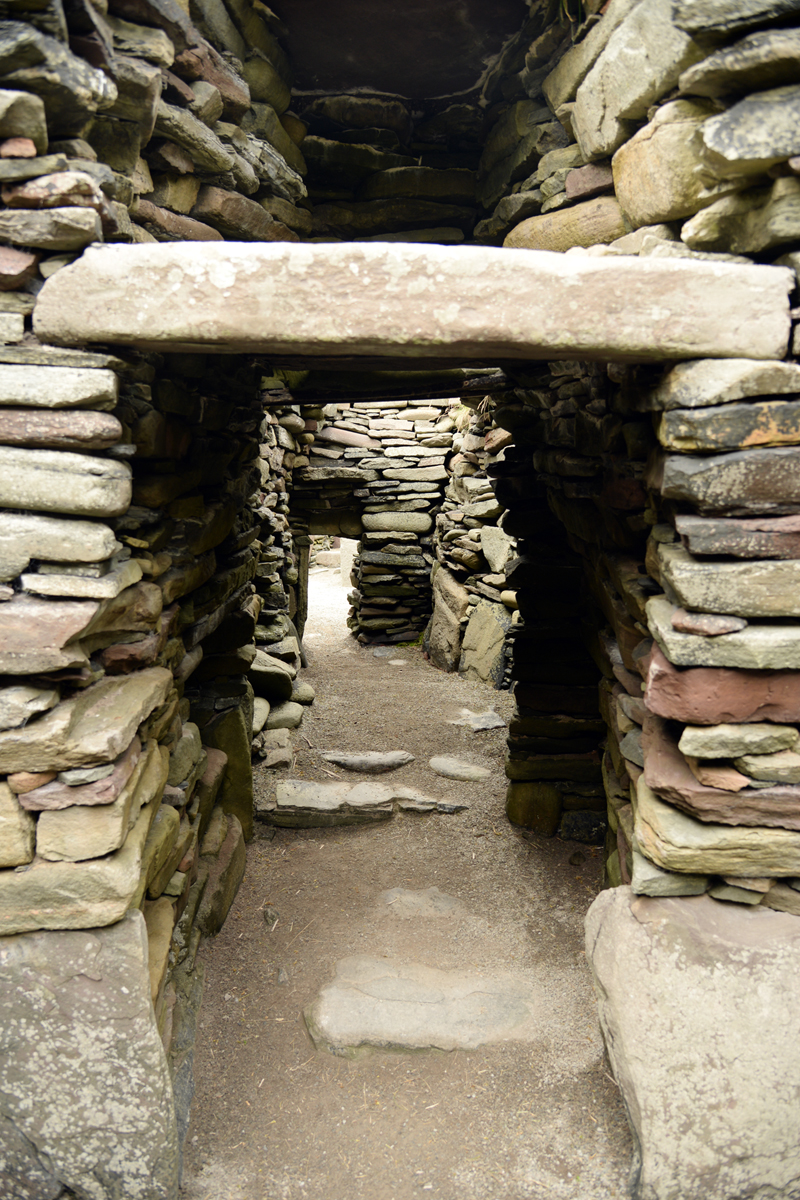
It is posible to still see parts of 4 of the wheelhouse. This type of house was introduced in the 2nd and 3rd centuries AD.Two of them are built within the remains of the Broch and it’s courtyard, making it a bit difficult to sort out the buildings from one another. These houses I found the most interesting.'

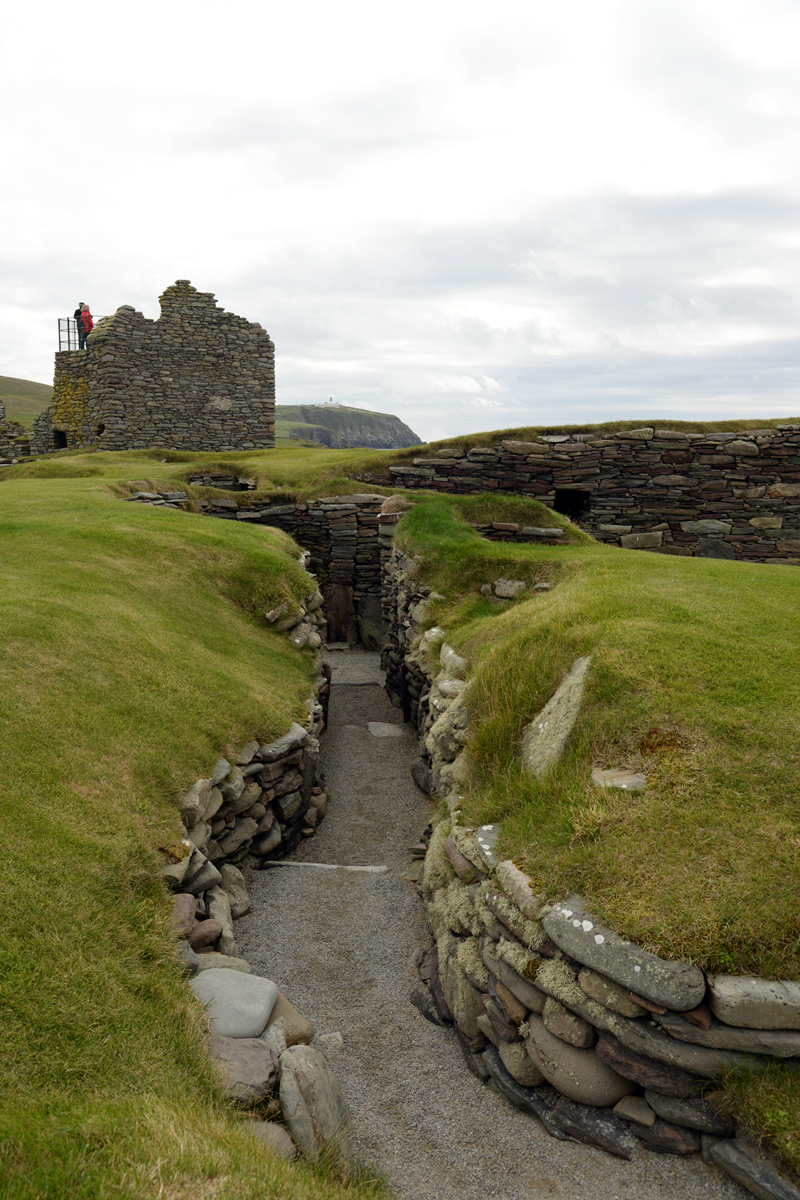
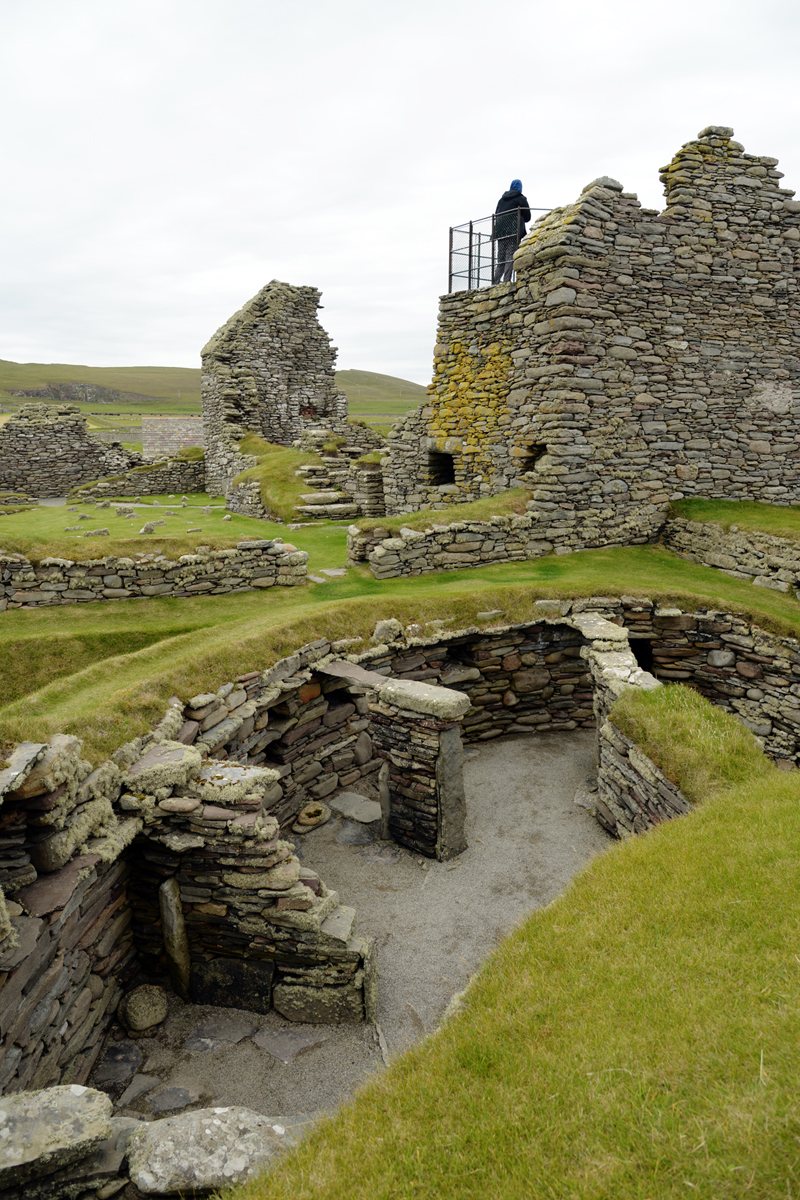
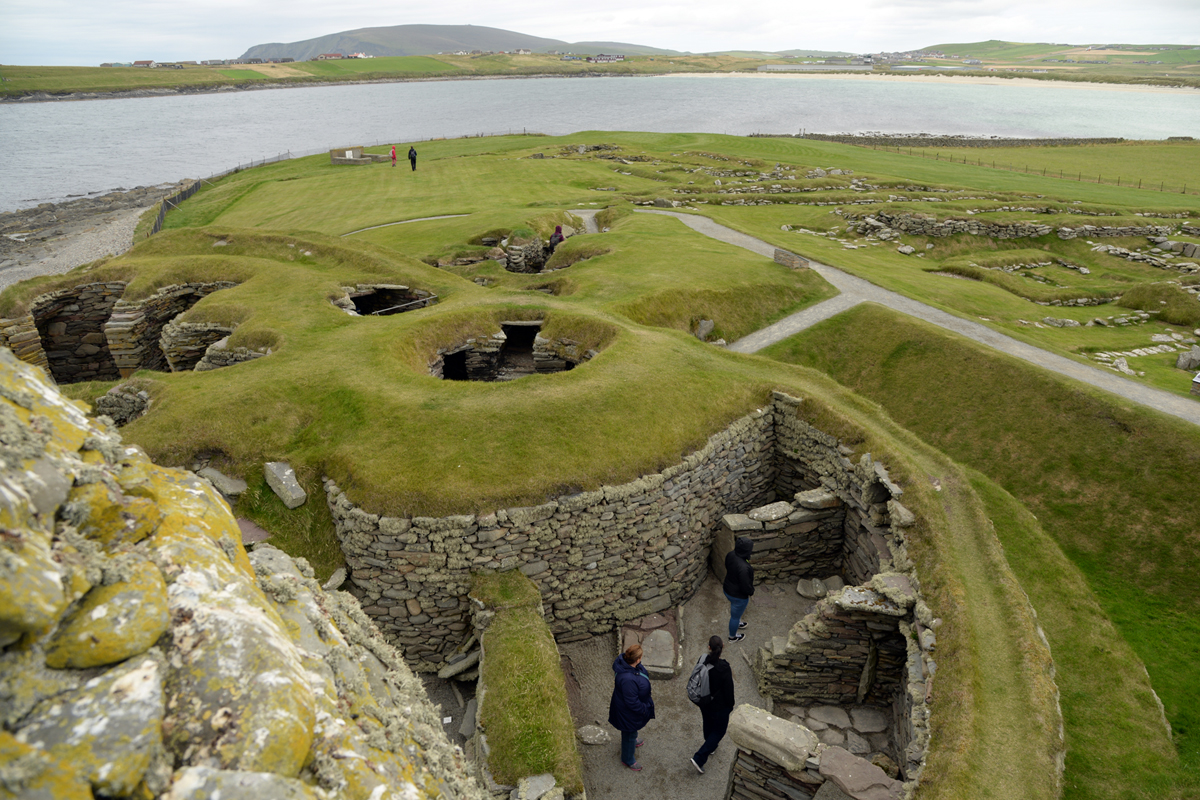
Especially one of them is well preserved. Because Jarlshof is situated close to the sea, you can hear the sound of the waves. It it's windy, like the day we were here, you can hear the wind too. But as soon as we entered a wheelhouse, it became completely quiet! It was impossible to hear anything!
6: The Norse settlement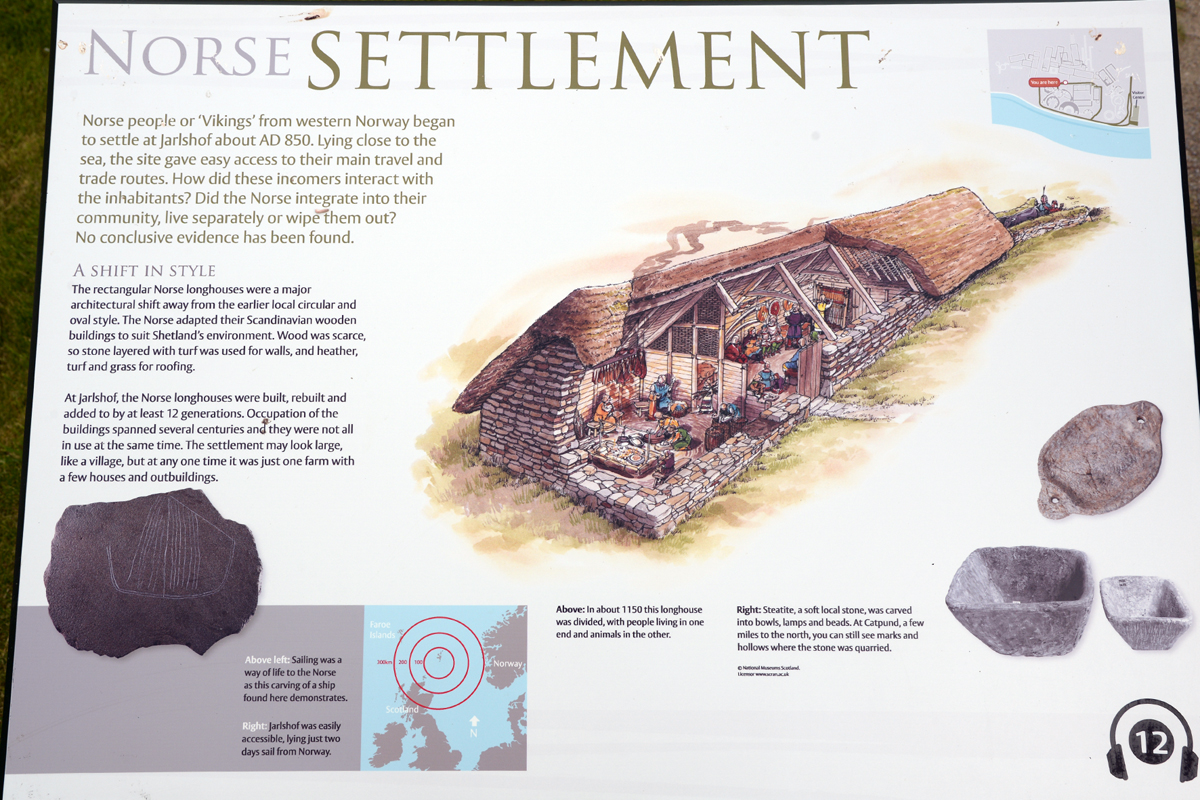
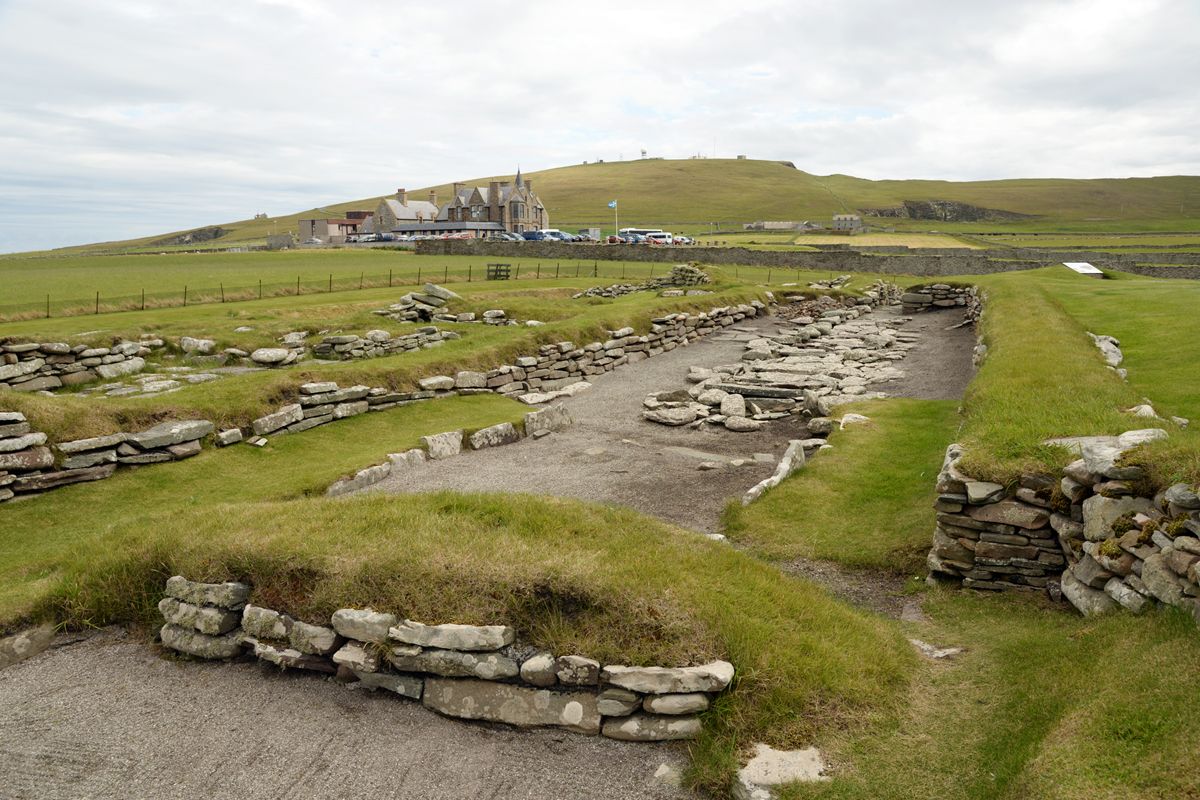

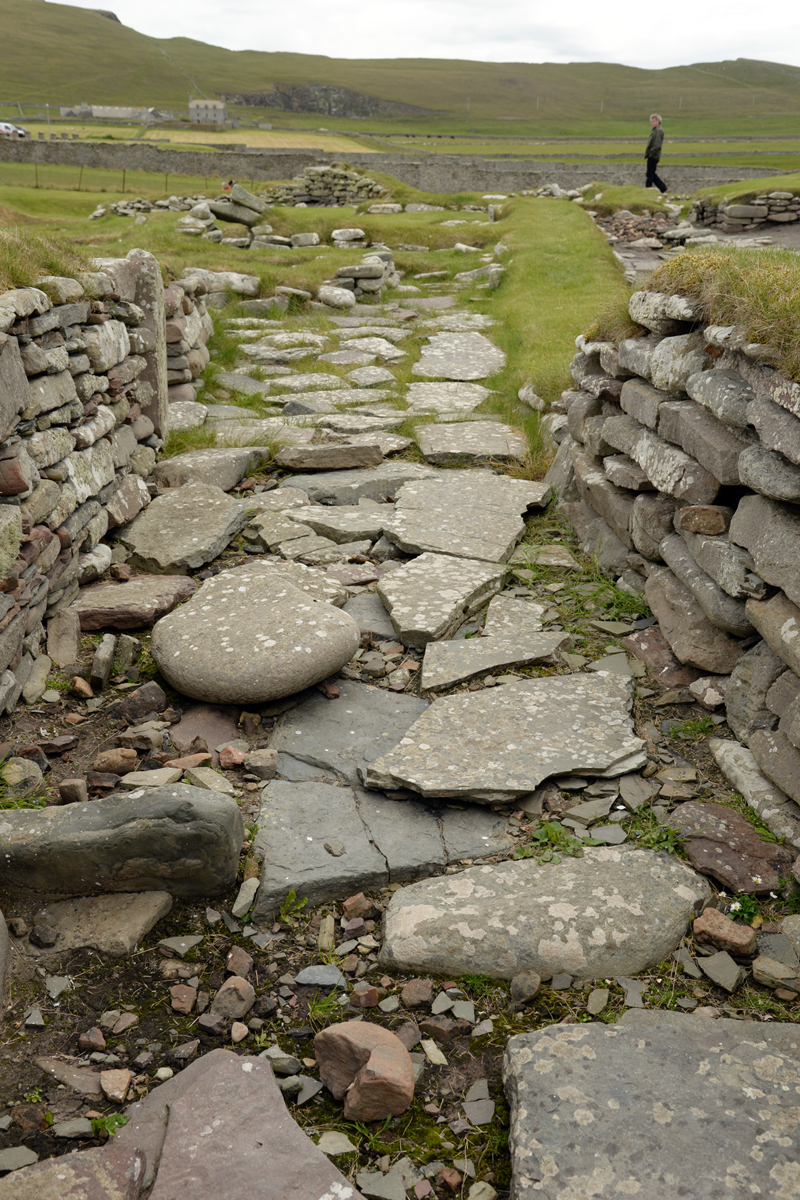
What we can see es only the foundations as evidence of the Norse settlements. The first houses were established by farmers around 800s that was the time of the first raids done by the Vikings on these coasts. But this settlement kept developing for the next 400 years. Excavations shows that the houses in the Norse village dates back to between 9th centrury and 13th centuries. The layout of the longhouse is what we see here. The settlement grew and developed to include buildings for different use during these centuries.
7: The medieval farm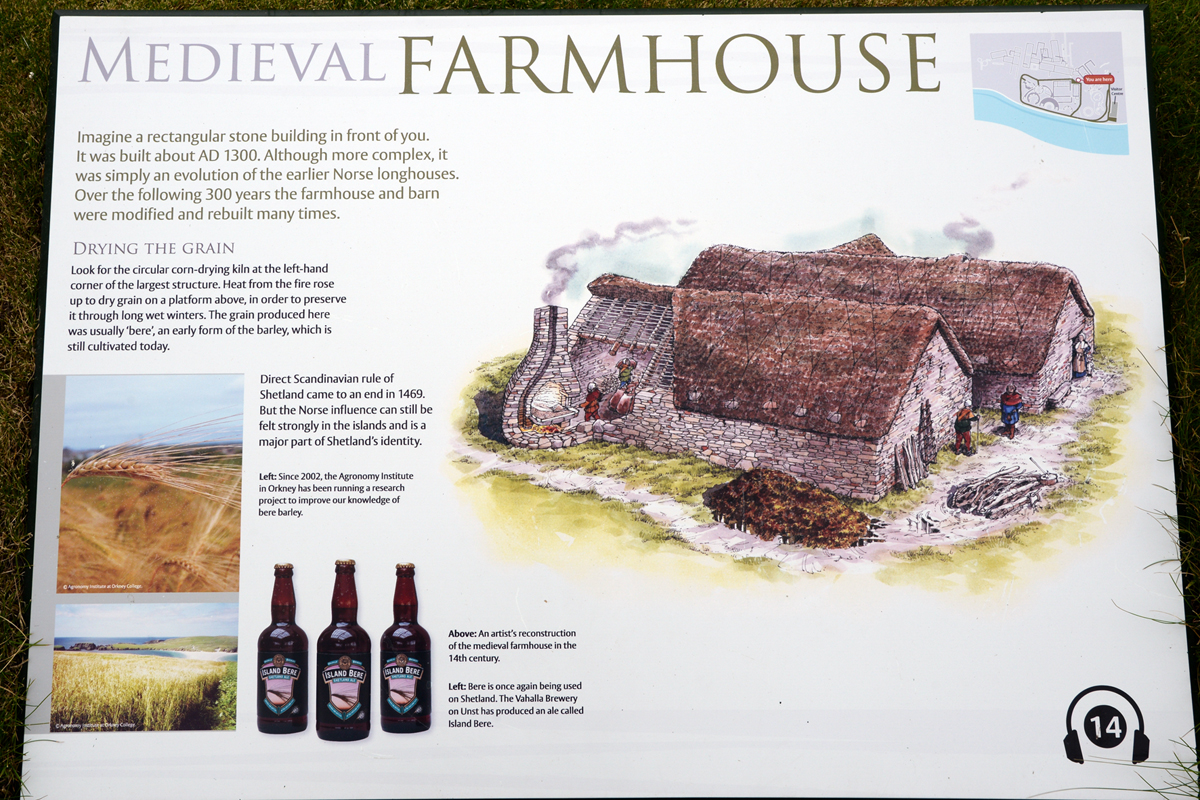
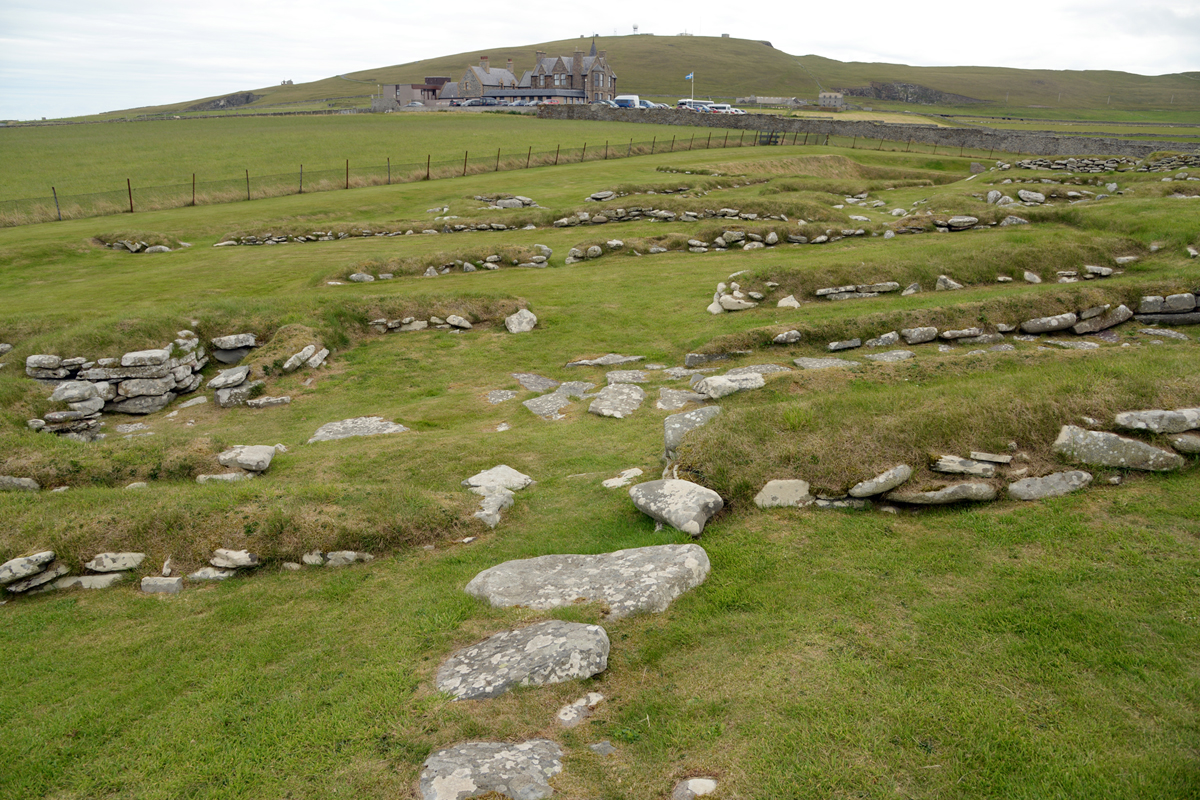
The farm was established in the 1200s and consisted of both a farmhouse and a barn. At this time Shetland was still ruled by Norse earls and under Norwegian rule. The style of the buildings were therefor the same style as in Norway. Because the area around Jarlshof belonged to the church of Bergen (Norway) it is assumed that the inhabitants here had contact with their ancestral land.
8: The new hall and laird’s house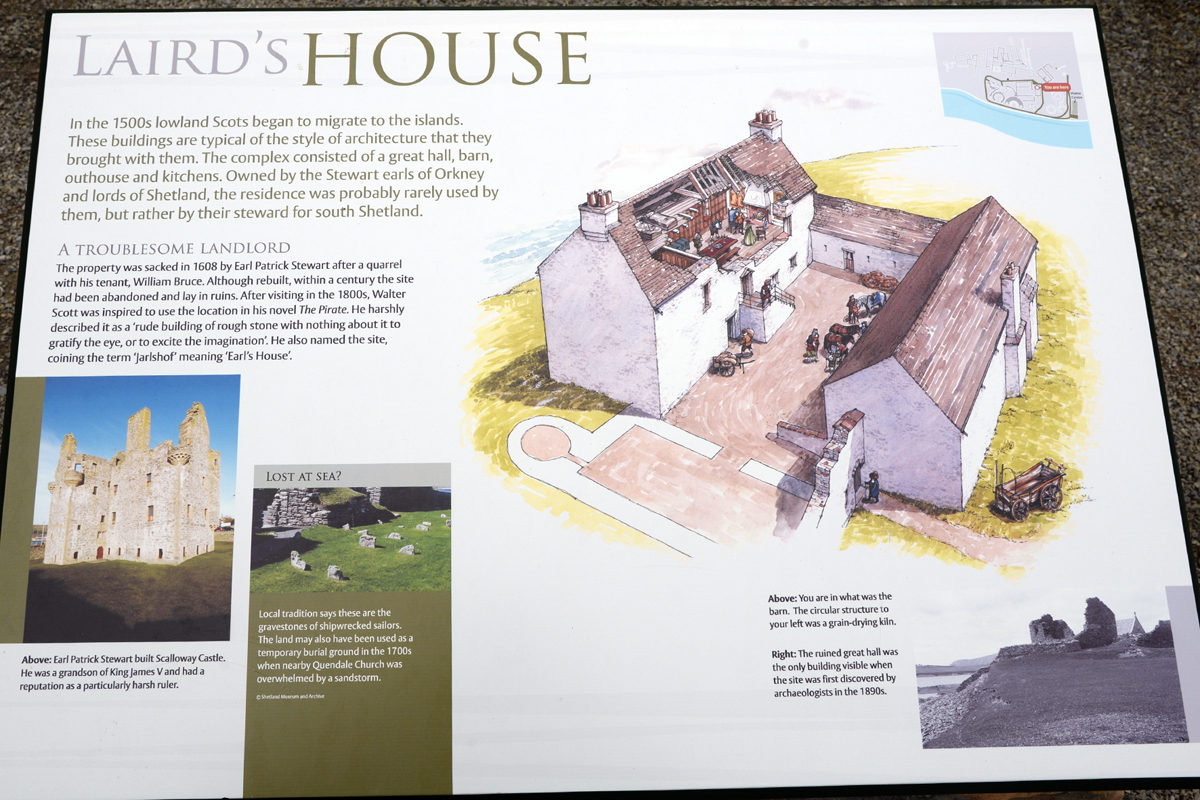
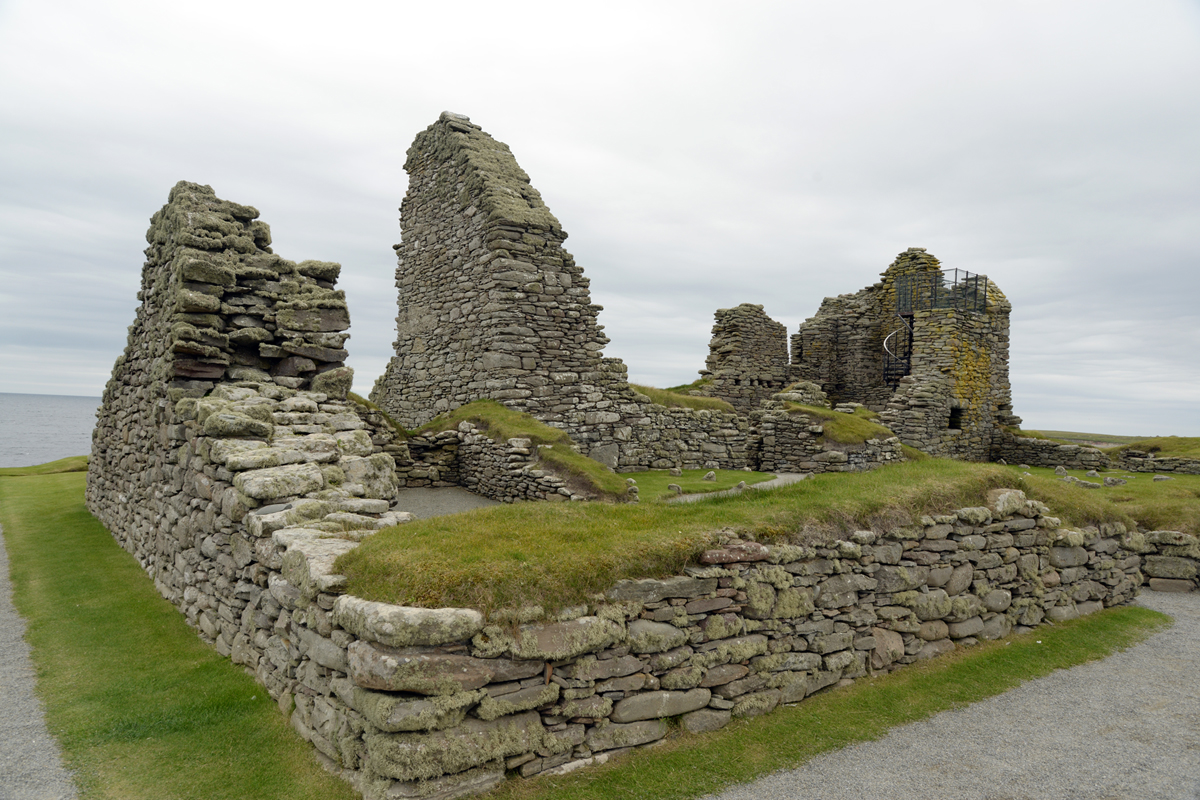
The last house built at Jarlshof before it was totally abandoned, was the Laird's house, built in 1580s by Earl Robert Steward, the new lord of Shetland. The style of this house is the same style used by people in mainland Scotland. Shetland and Orkney came under Scottish control in 1469. Sir Robert Stewart became Earl of Orkney and Lord of Shetland in 1581. He was in control of Jarlshof.
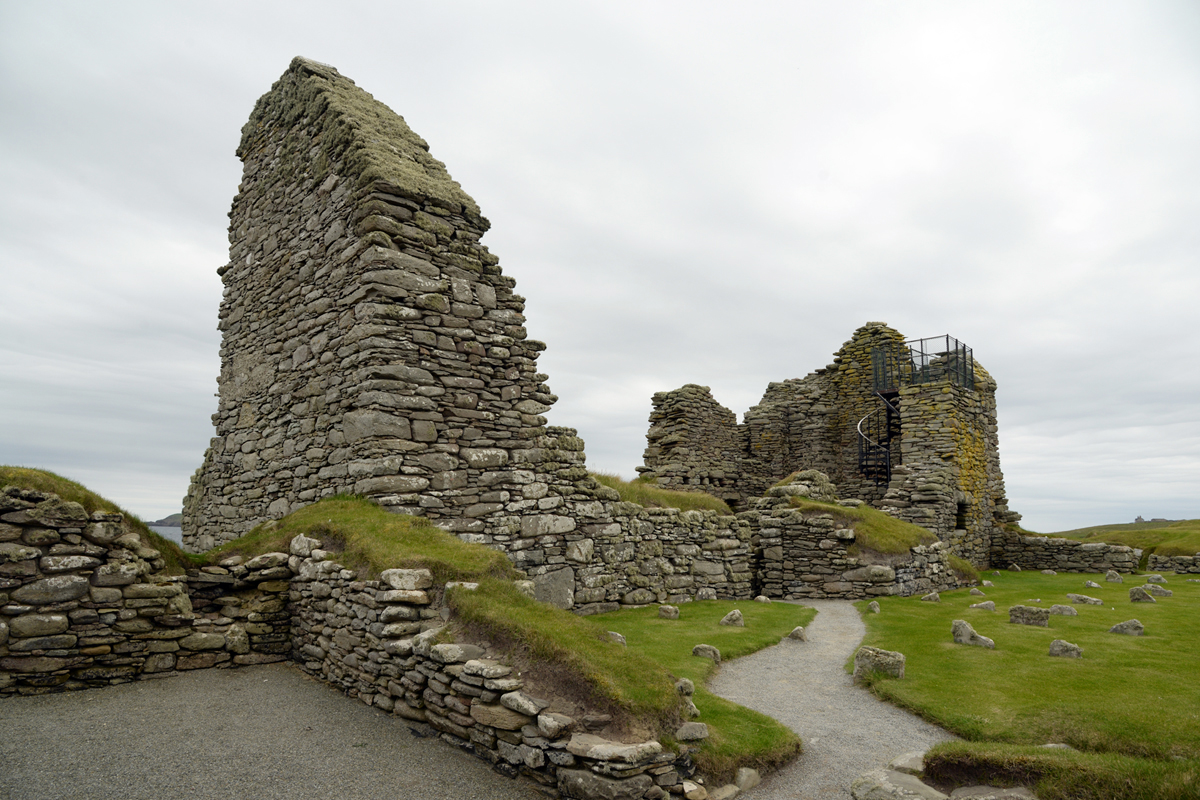
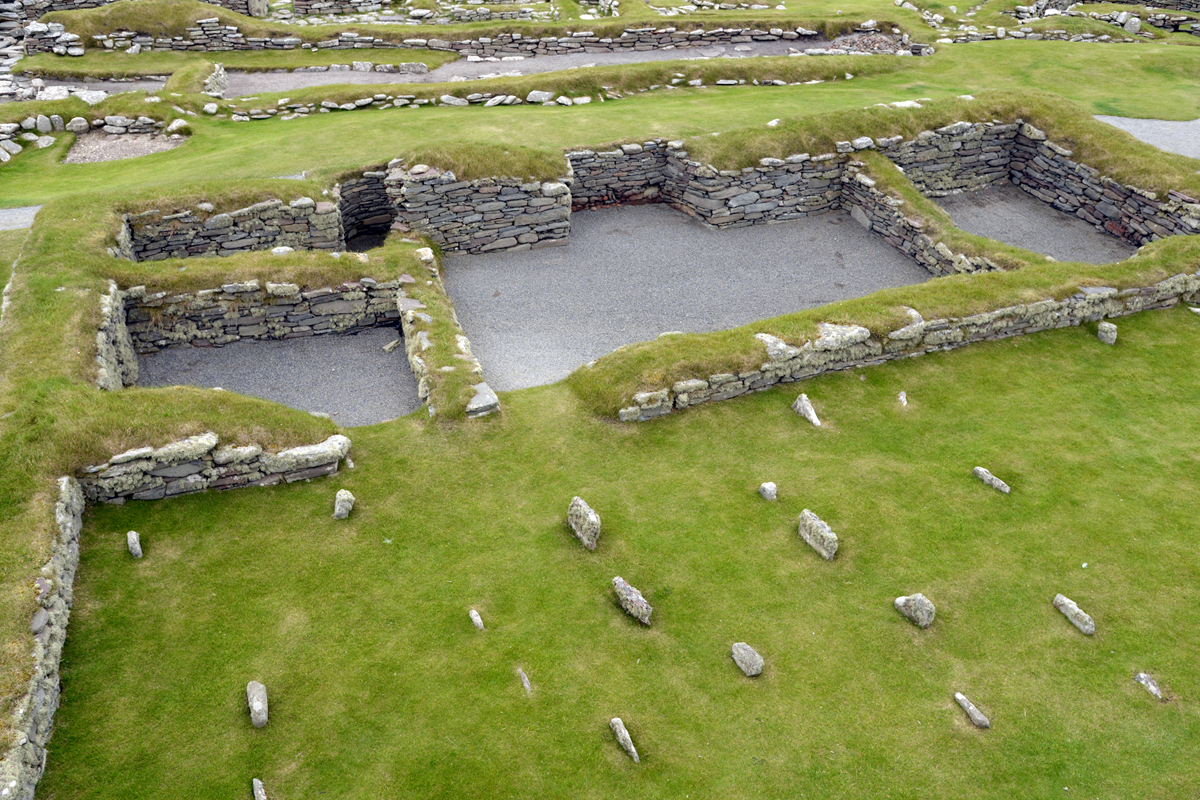
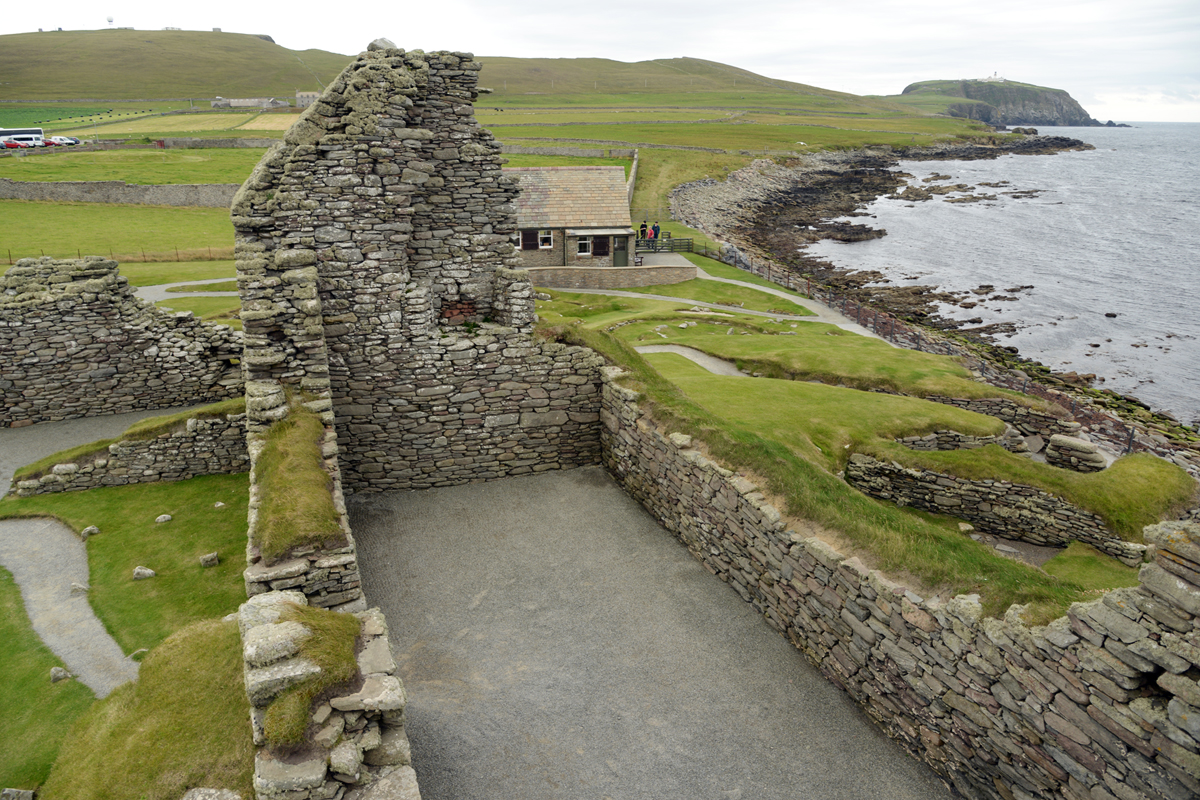
The house consists of two structures and a courtyard. Also a barn and a graveyard that's placed next to what is left of one of the structures. It is said that it's shipwreced sailors who are burried here. But I don't know if that is so. We could actually get to the second floor and from here look get a view of the whole of Jarlshof.
This is end of tour around this unique historical place. We lost of bus when we had finished our tour. But the hotel at the car park had a restaurant. A good place to have a late lunch.
Please do follow if you want to keep up with my next travel story. Any upvotes or reblogs are hugely appreciated!
Latest travel stories, check out :
Hungary – Contrasts in Budapest
U.J
Kristiansand, Norway
All the photoes are mine, Ulla Jensen (flickr, Instagram and facebook)
[//]:# (!pinmapple 60.153543 lat -1.148795 long Scotland - A historical journey over 4000 years in one place d3scr)
Read about us? // Main page!
Latest content: Travel, Art, Article, Poetry









































Although coming from the north coast of Scotland, I've never been to Shetland (but have been to Orkney quite a few times). I have to say I'd never heard of Jarshof, but it looks incredible - and its now on the list ! Thanks for sharing !
It's definitly islands that should be explored. Orkney is absolutely great too. I spend 3 days in Orkney and 3 in Shetland. We took the ferry from Aberdeen. One week wasn't enough. Next time I will stay longer :)
The place is rich in history💝💝💝 Great pictures by the way!
Yes it is. In a way hard to believe that these remote islands have had settlements that goes thousand of years back.
Wow amazing that despite the weather conditions and many many years the site is still in such good condition relatively. Great post! :)
Thanks :)
beautiful landscape, I hope to visit it soon
I hope to be able to visit again, but have more time.
It’s stunning. And the grass surrounding all the remains. Beautiful.Such a history there @digi-me 😊 glad they rediscovered it again. I think I have to add this location to my list of places I want to vitiate one day.
It's a stunning place. The islands are only a short flight from Norway, but the seem so remote and so diffrent. Definitly a place where I am going to back to.
I can imagine @digi-me they are stunning. Sometimes you don’t need to go far to be in a place so beautiful but yet so different. 😊
Yes you are right. Sometimes the most interesting places are closer than we think :)
Fascinating to see how one site can go so far back historically while the new generation builds on top of the old buildings.
I´m always wondering what we would find if we decided to start digging a bit deeper in our heavily settled areas.
Agree with you. I think we will find many more interesting things it we start digging. Sometimes I think about the Terracota Army in China. That is a huge excation site, and only discovered because a peasant was digging a well... How many more secrets are there...
What an amazing tour!
I have bookmarked this to read again!
It is an amazing place. Hope to go again.
Discord Server.This post has been manually curated by @bhattg from Indiaunited community. Join us on our
Do you know that you can earn a passive income by delegating to @indiaunited. We share 100 % of the curation rewards with the delegators.
Here are some handy links for delegations: 100HP, 250HP, 500HP, 1000HP.
Read our latest announcement post to get more information.
Please contribute to the community by upvoting this comment and posts made by @indiaunited.
Thank you so much :)
It looks absolutely amazing, I've always wanted to go to Shetland, just because it seems so remote. Now looking at your post, it is really worth a trip there. How long did you stay and did you go to all the way up to the most northern island
If you go, you won't regret! The islands feels remote, less people, beautiful landscape and full of historical places. Because the islands are remote, I never thought they have long history. I only had 3 days, because I combined with the Orkneys (just as remote, beautiful and loaded with history), so I didn't get the chance to go to the northern islands. But I am sure I will visit again. It's only a short flight from Bergen to Aberdeen. From there we took the ferry.
Your content has been voted as a part of Encouragement program. Keep up the good work!
Use Ecency daily to boost your growth on platform!
Support Ecency
Vote for new Proposal
Delegate HP and earn more
Thank you so much :)
Impressive story, and the place itself is beautiful. I didn't know about the sand. Always thought those islands are all rocky.
The history of Shetland is facinating, beautiful landscape and very green. There are rocks a few places, but not everywhere.
Hope to visit it one day too 😇
beautiful place
Those islands have so much to offer.
How amazing is it to find a layer upon layer of settlements?!! I can only imagine the joy of archaeologists. And it has been preserved so well! I would love to visit the site myself, something to keep in mind for the future.
Agree. You can see 4000 years of different settlement in the same place!
Absolutely stunning. I'd love to go one day. My sister in law did archaeological digs for years and for a while was on a dig on Orkney.
Both Shetland and Orkney are places that must be paradise to an archeologist! There are so many archiological sites.
Congratulations, your post has been added to Pinmapple! 🎉🥳🍍
Did you know you have your own profile map?
And every post has their own map too!
Want to have your post on the map too?
Daily Travel Digest #1477.
Become part of our travel community:
- Join our Discord
- Learn more about our travel application
Hiya, @ybanezkim26 here, just swinging by to let you know that this post made it into our Top 3 in Your post has been manually curated by the @pinmapple team. If you like what we're doing, please drop by to check out all the rest of today's great posts and consider supporting other authors like yourself and us so we can keep the project going!